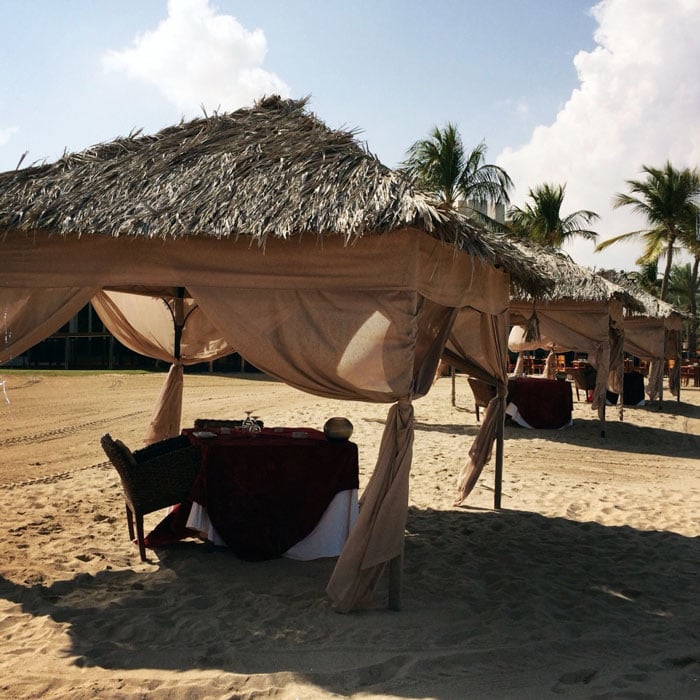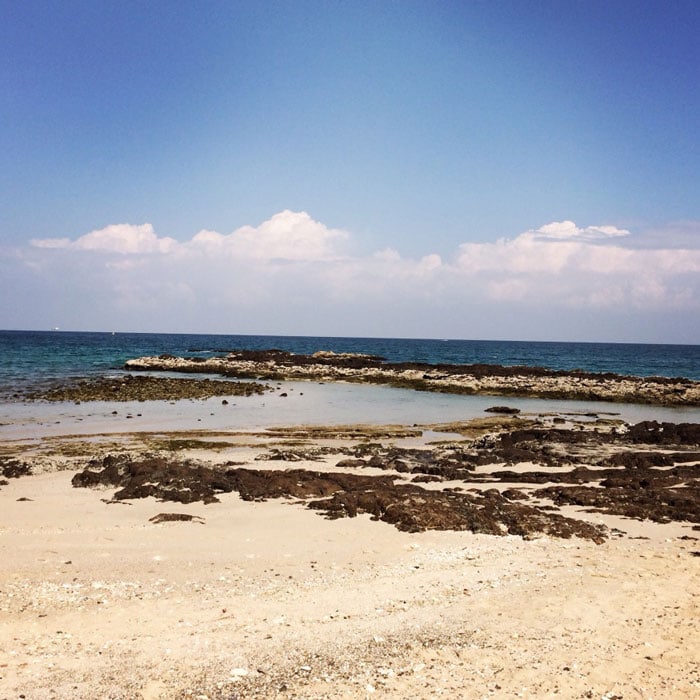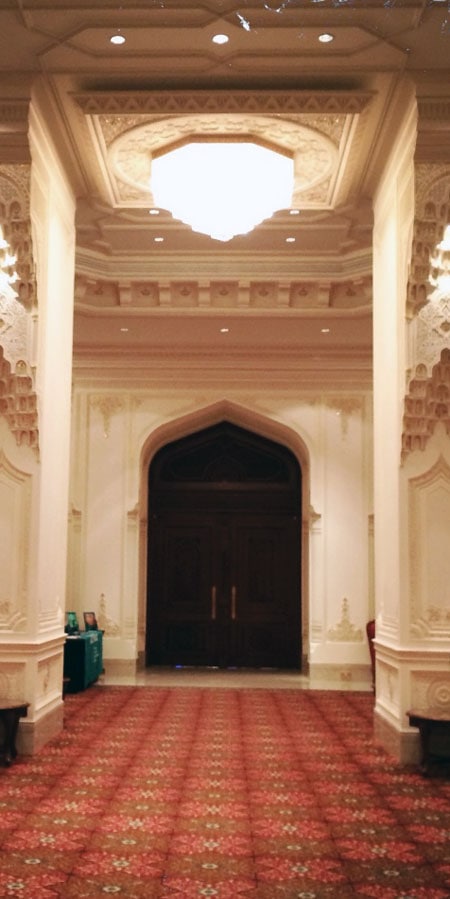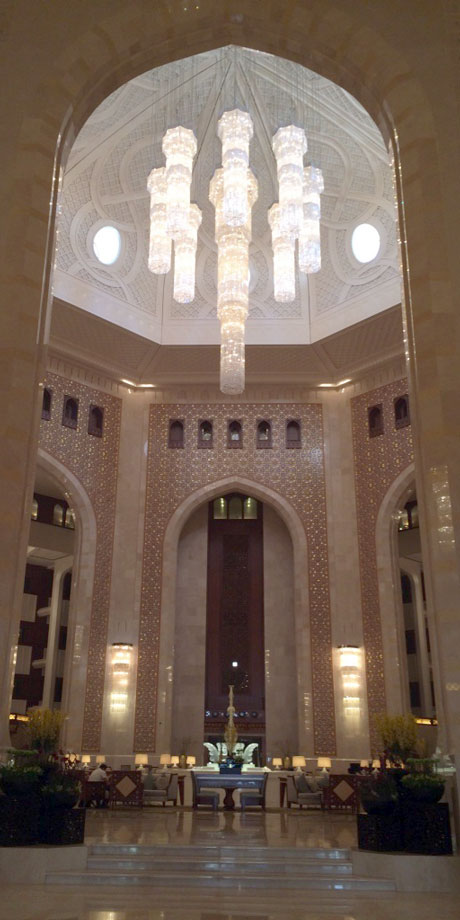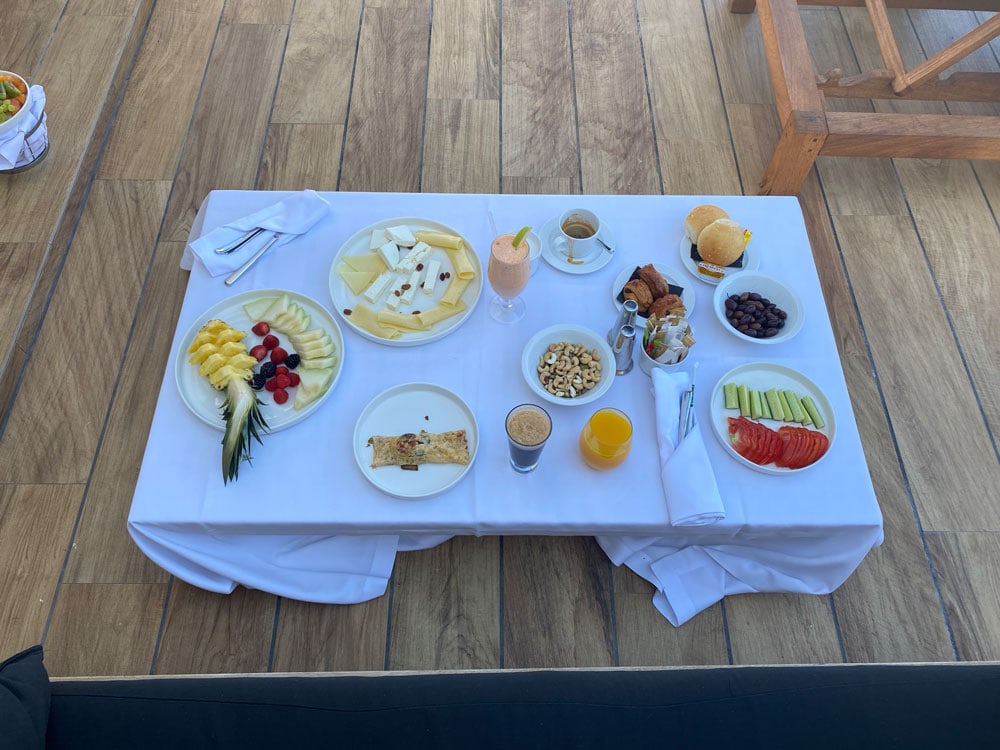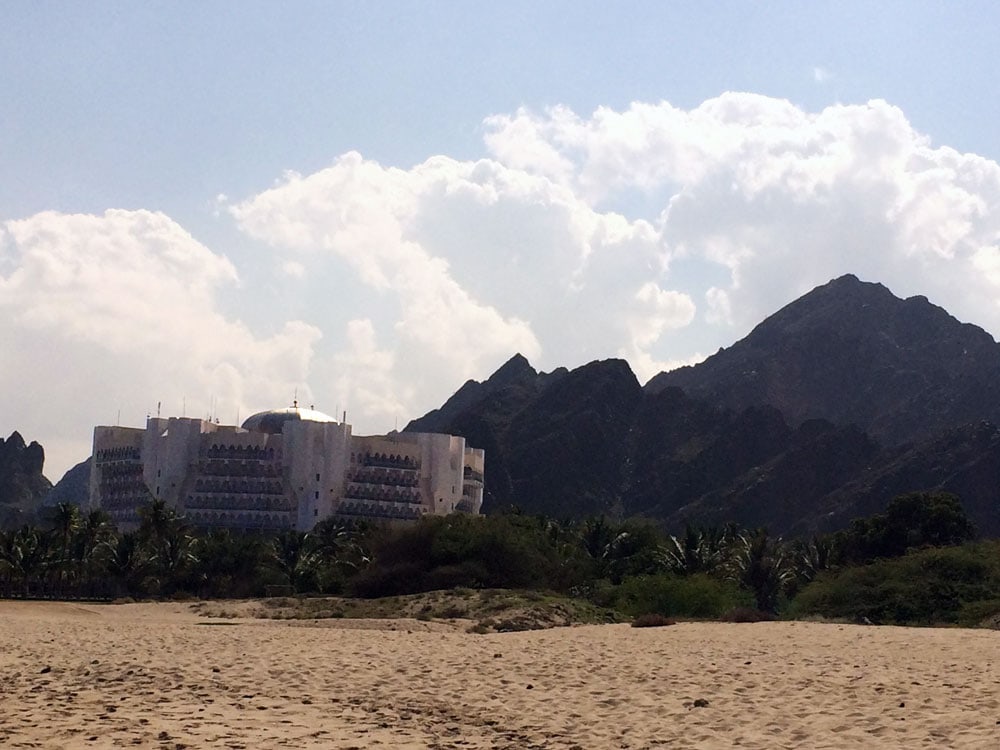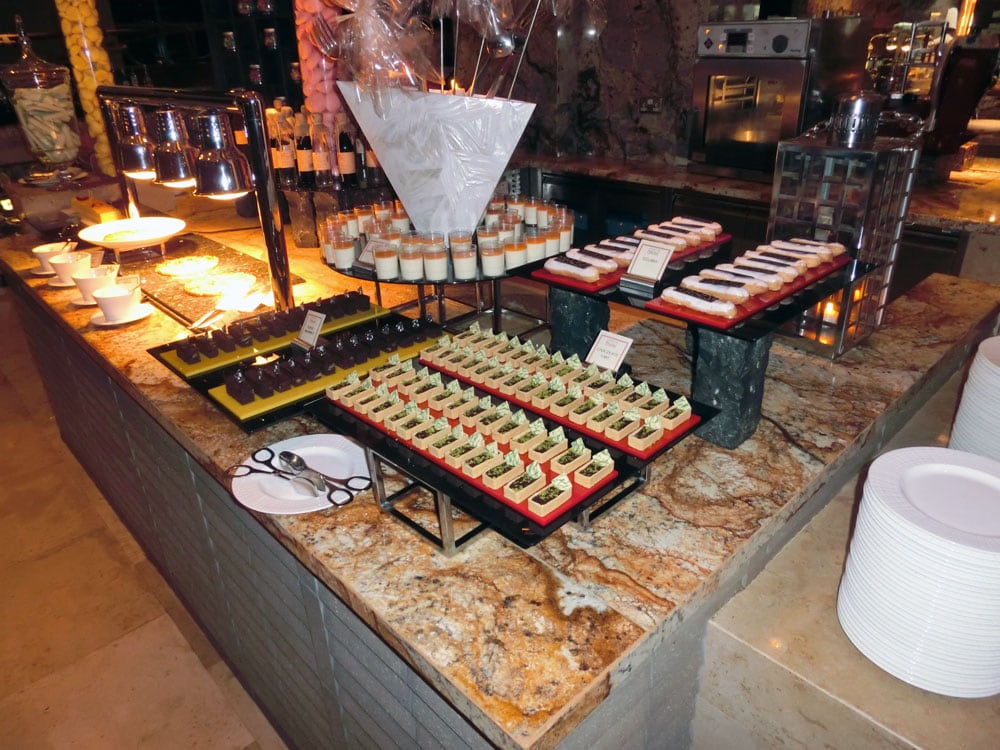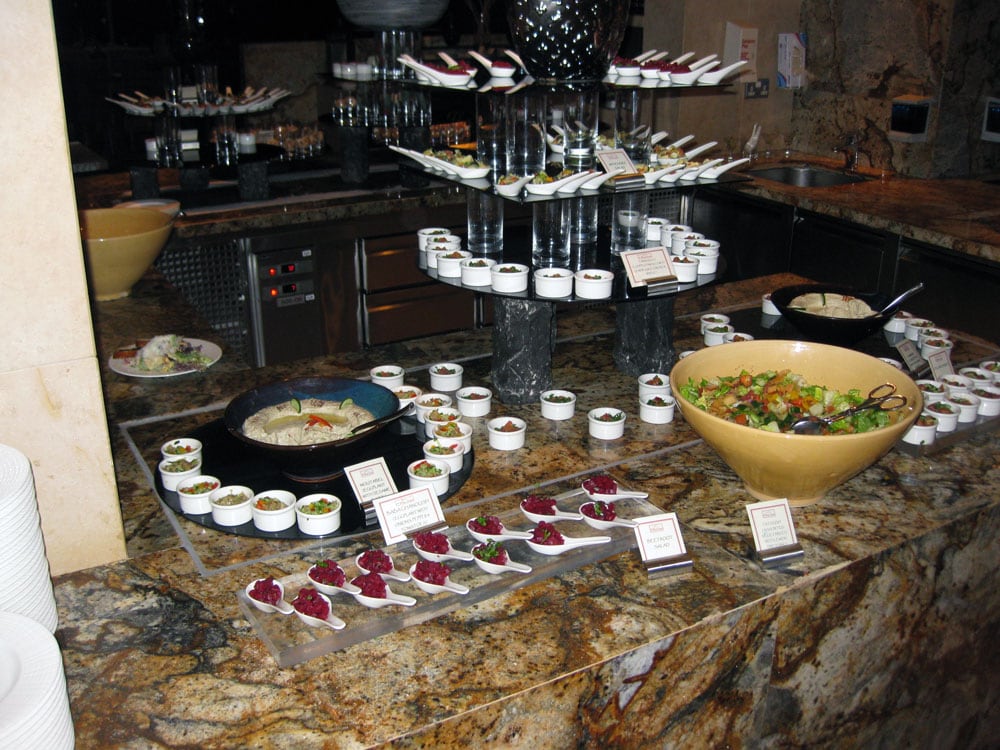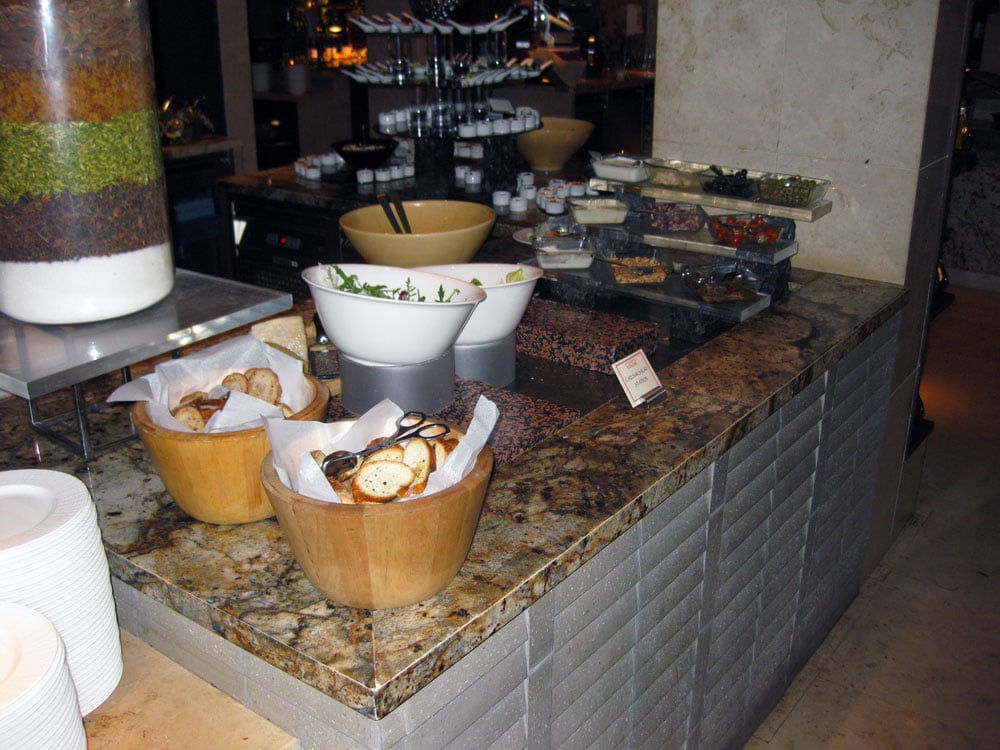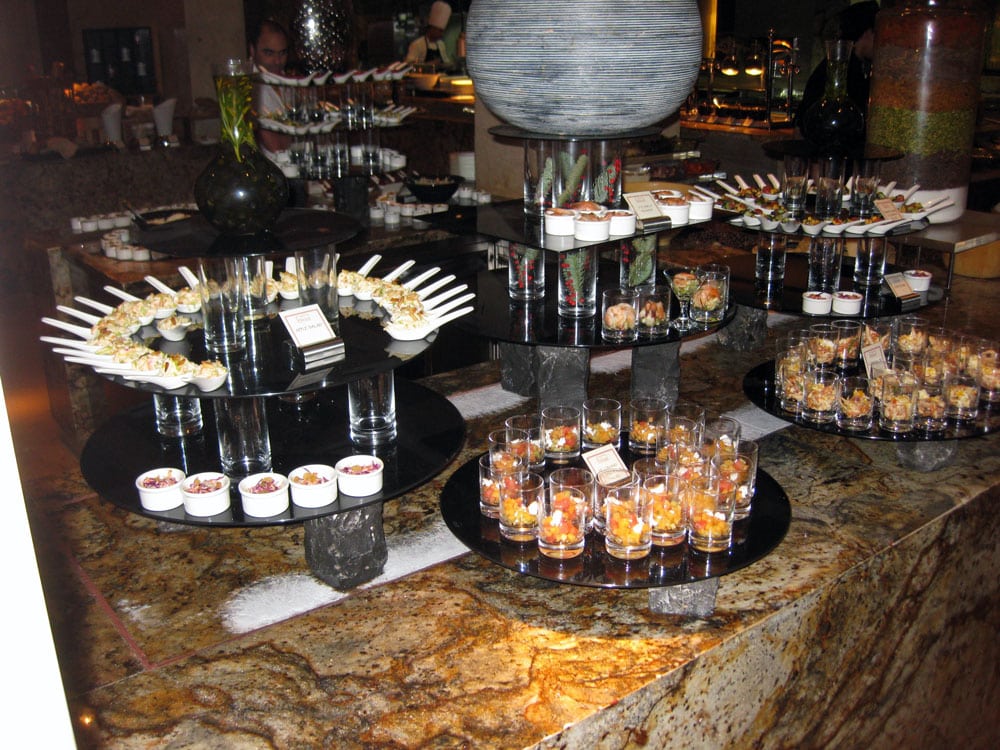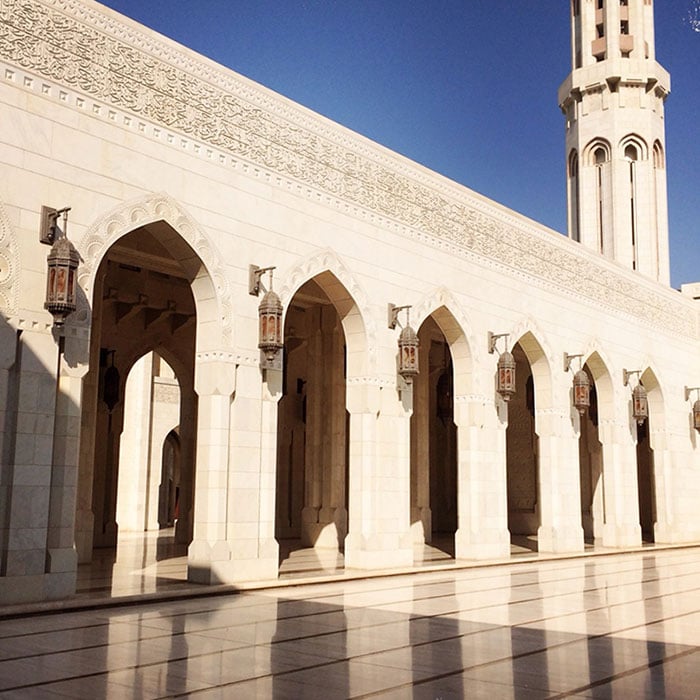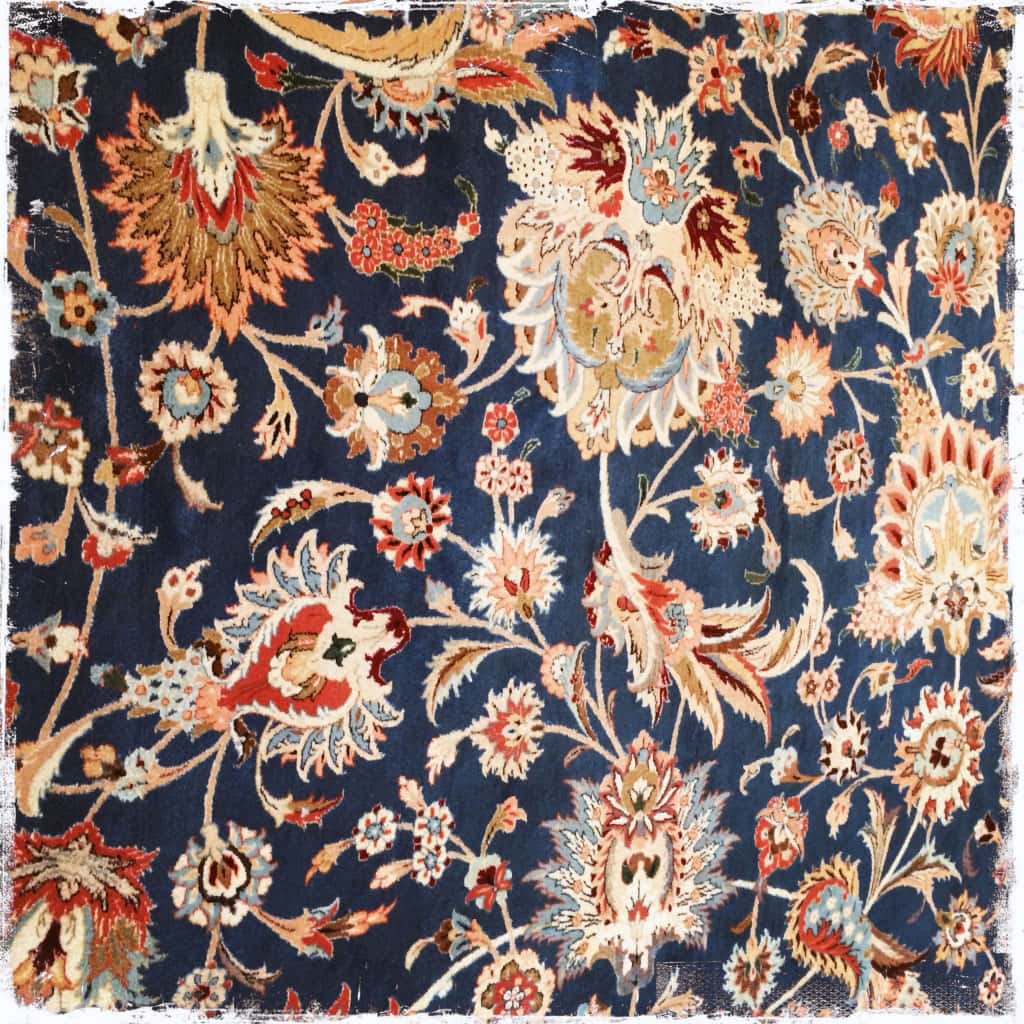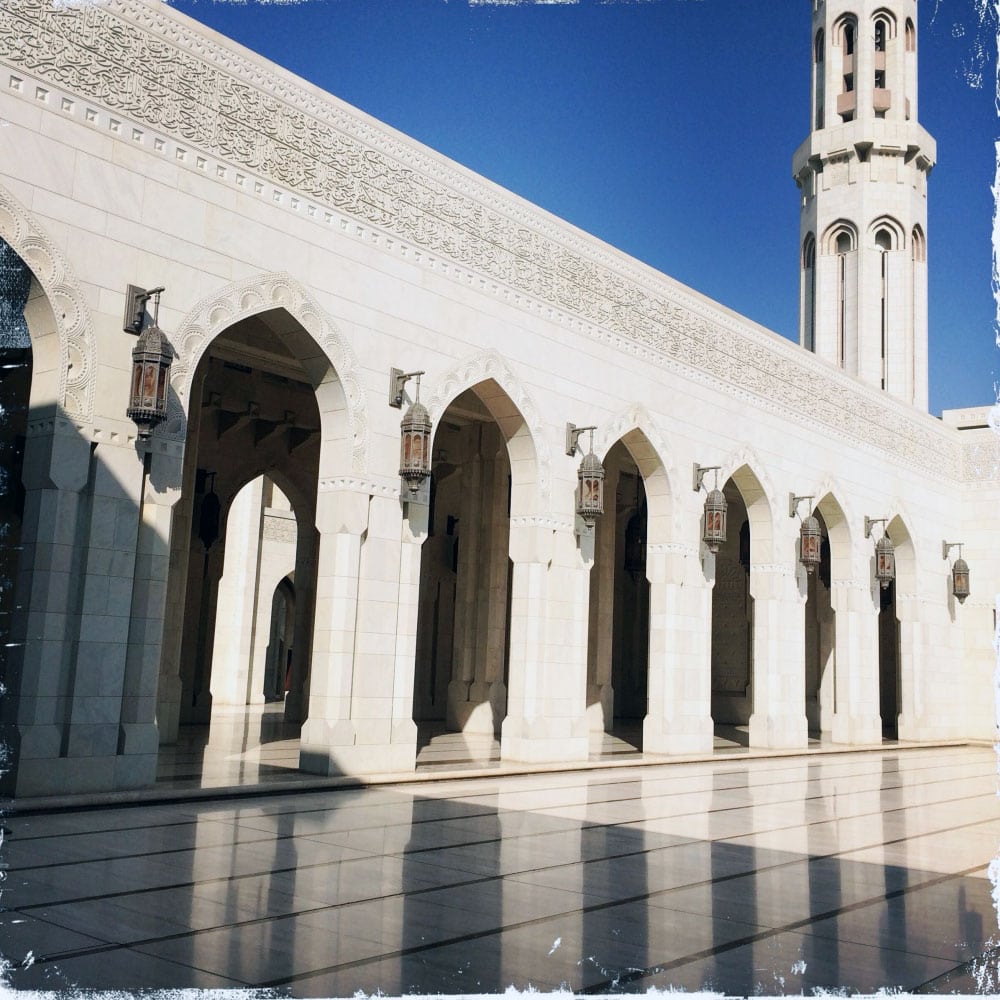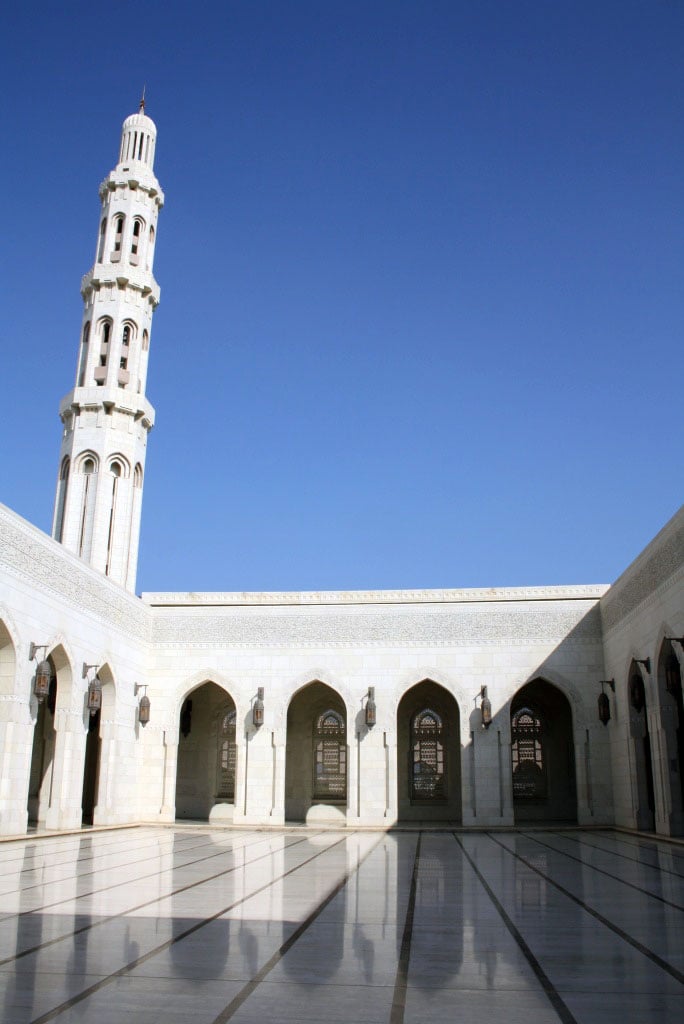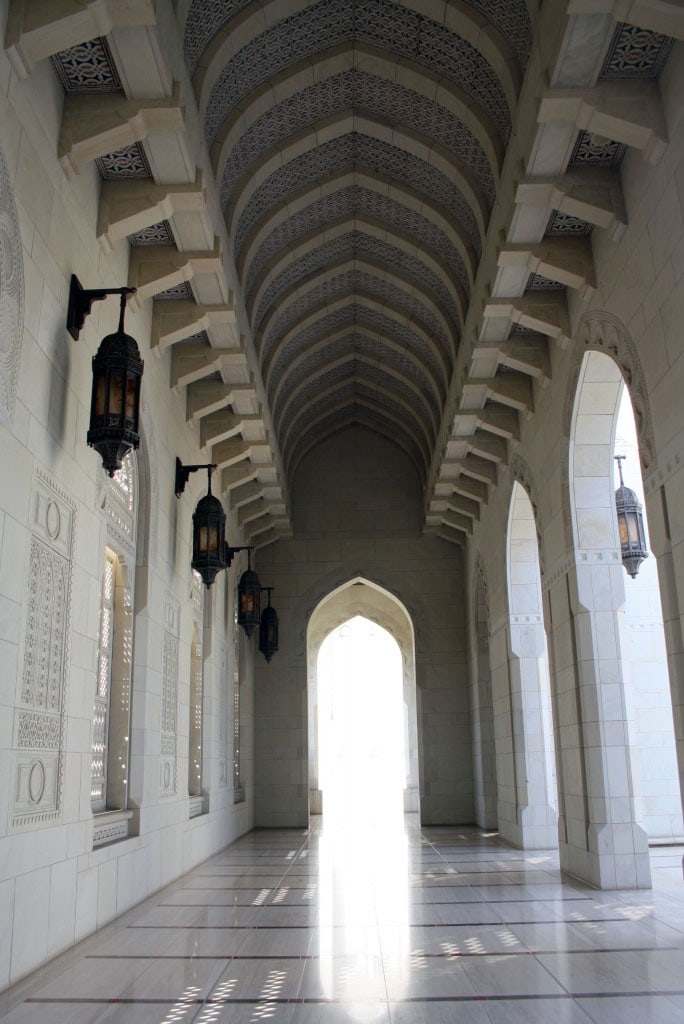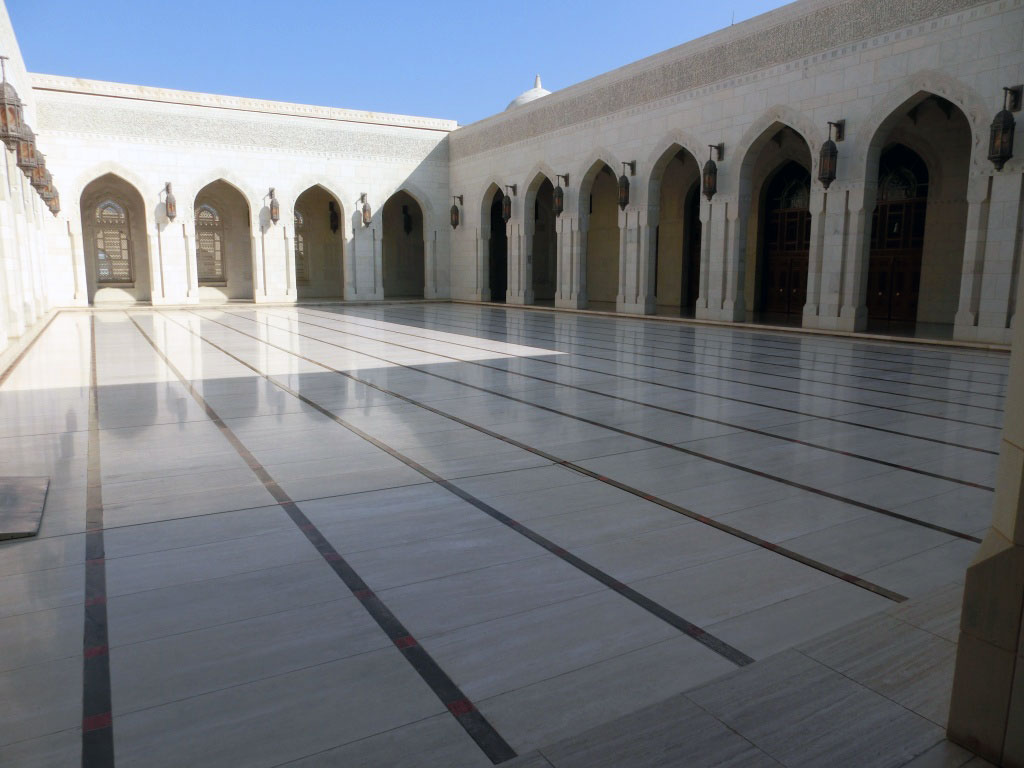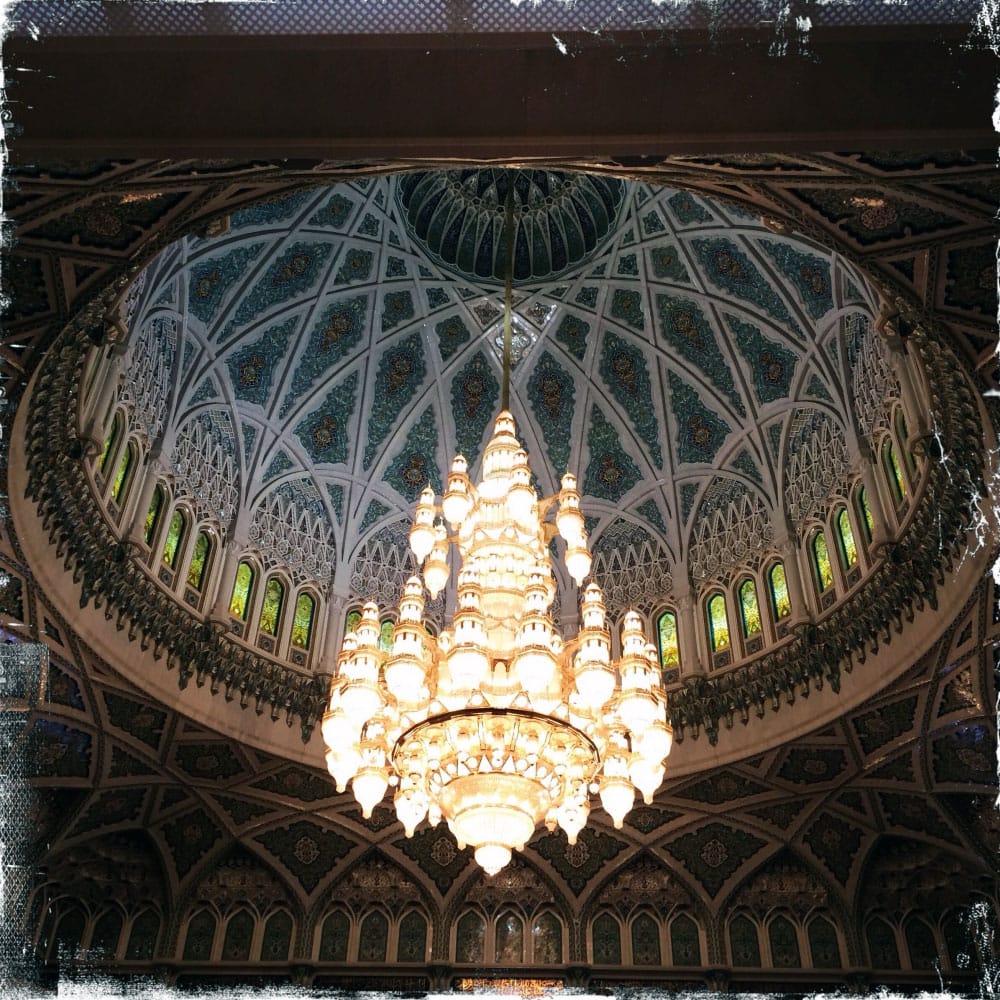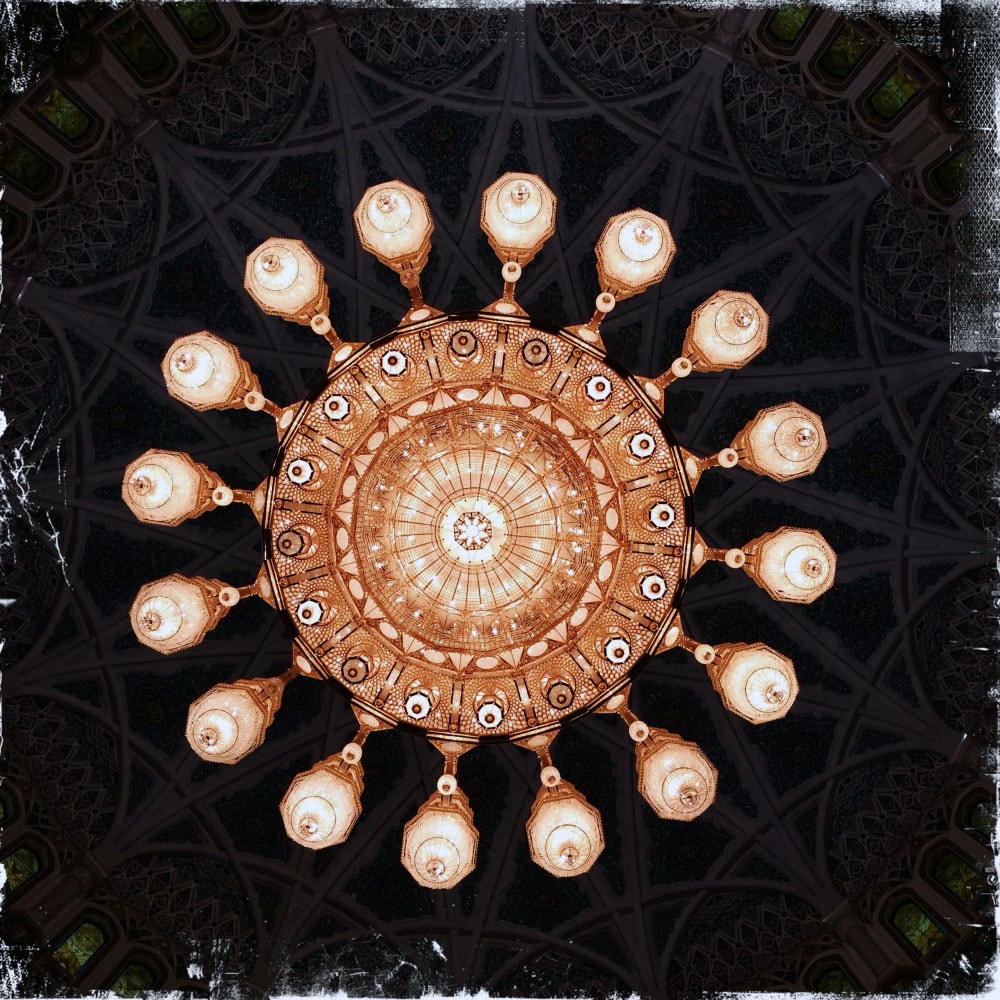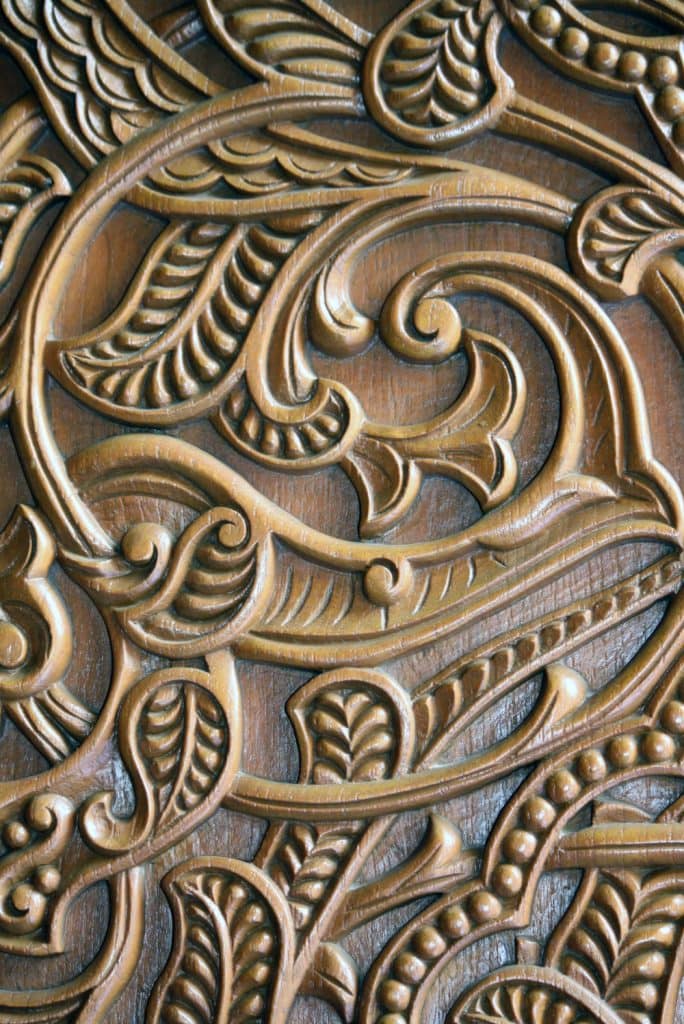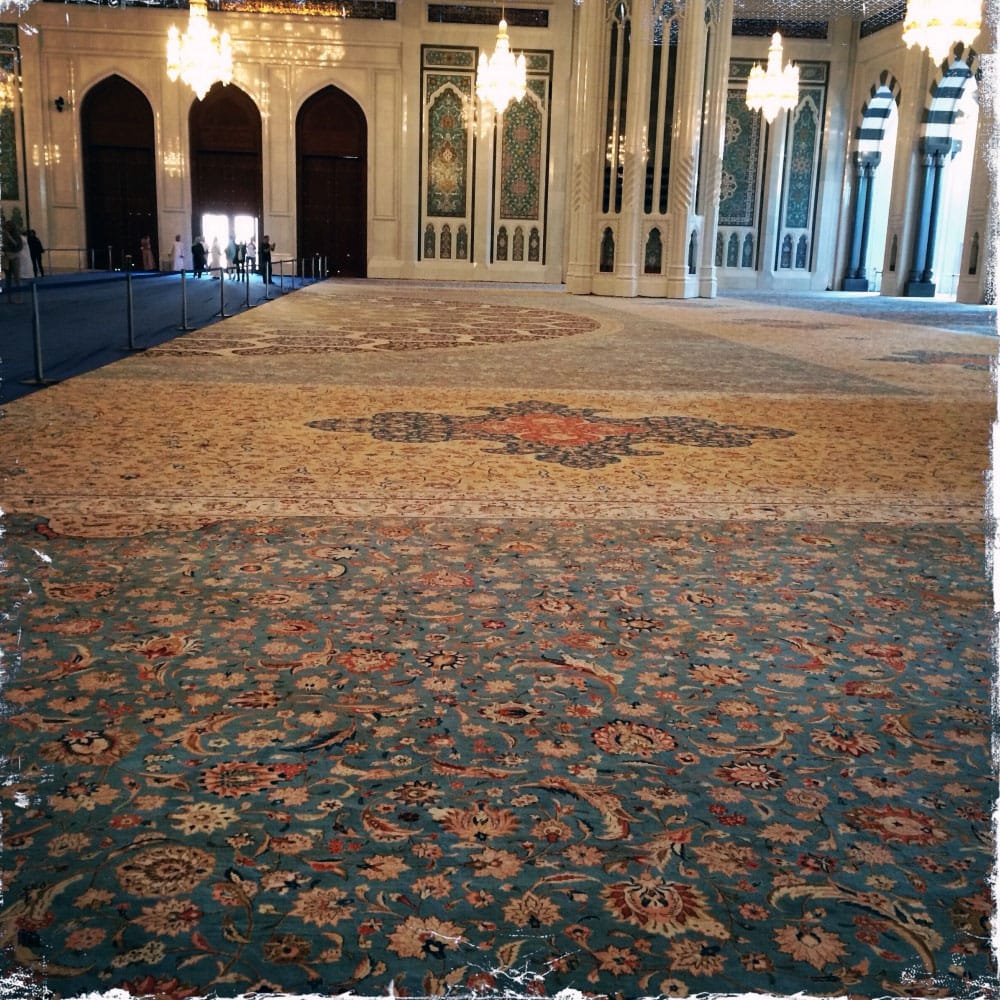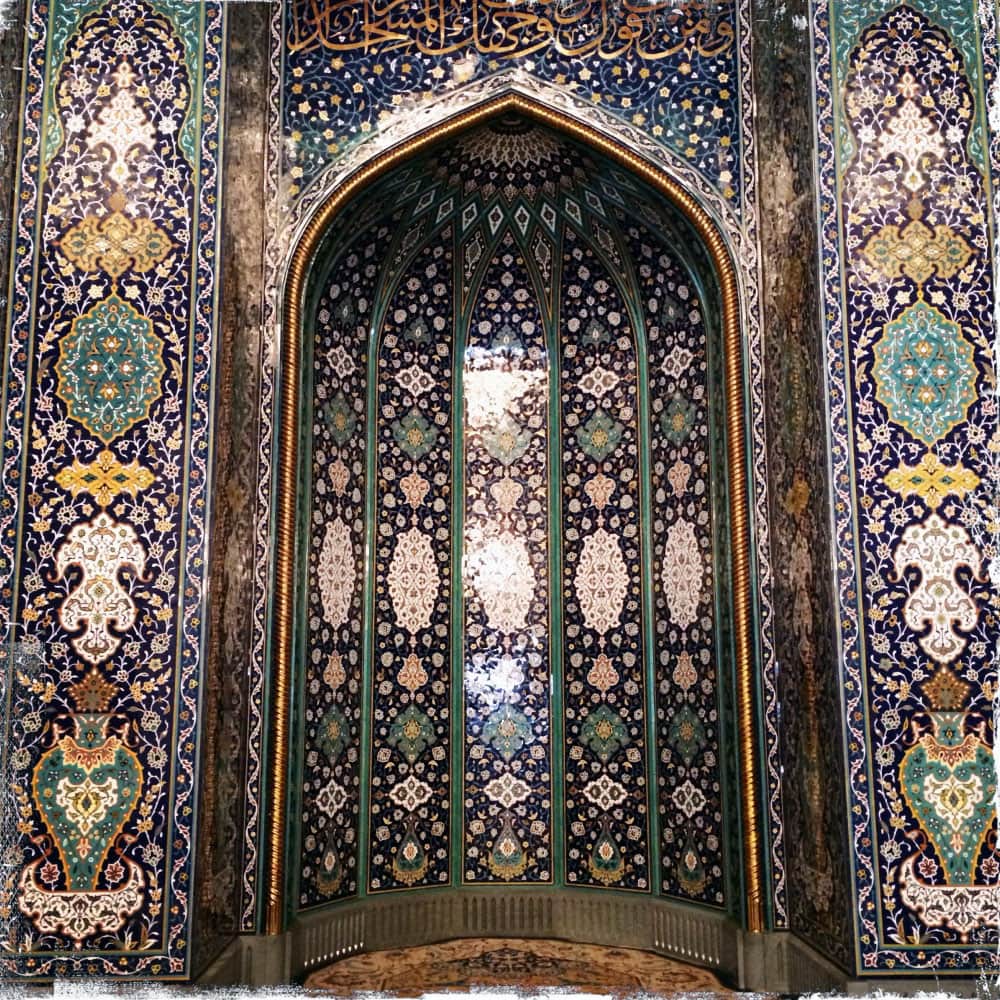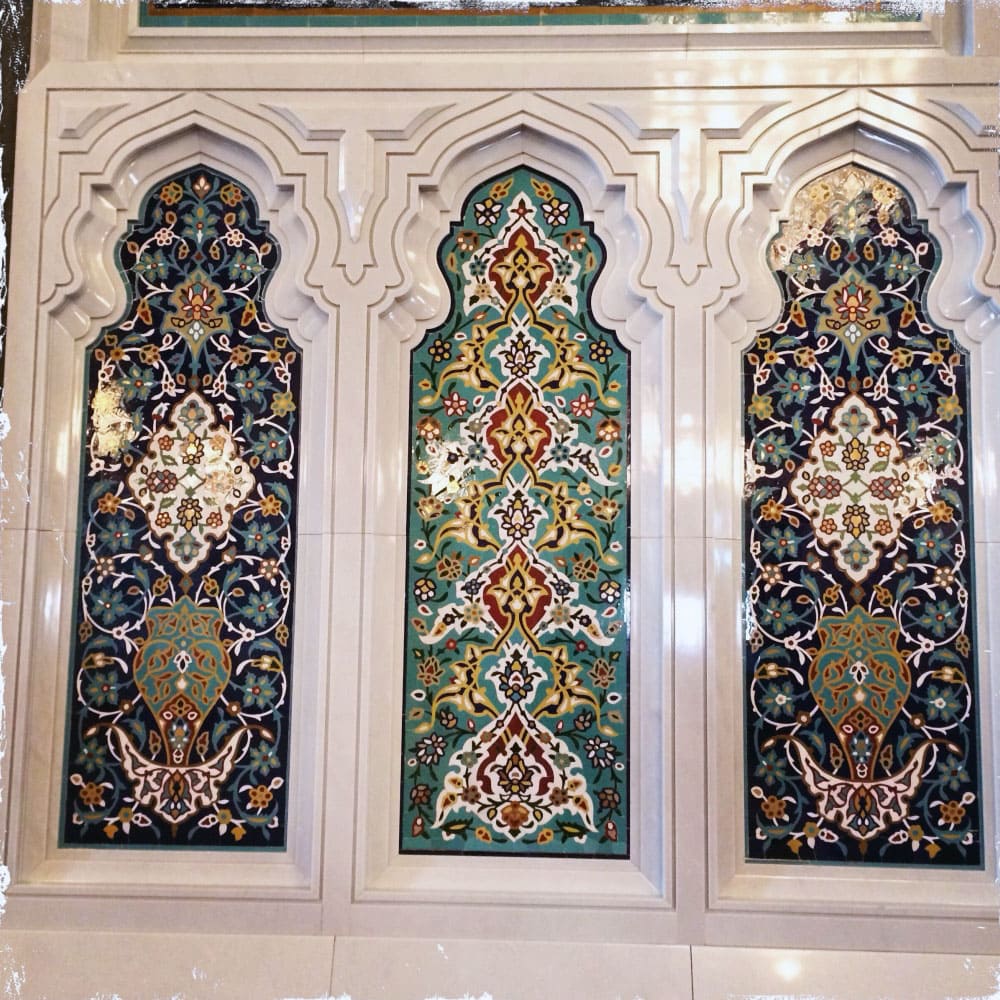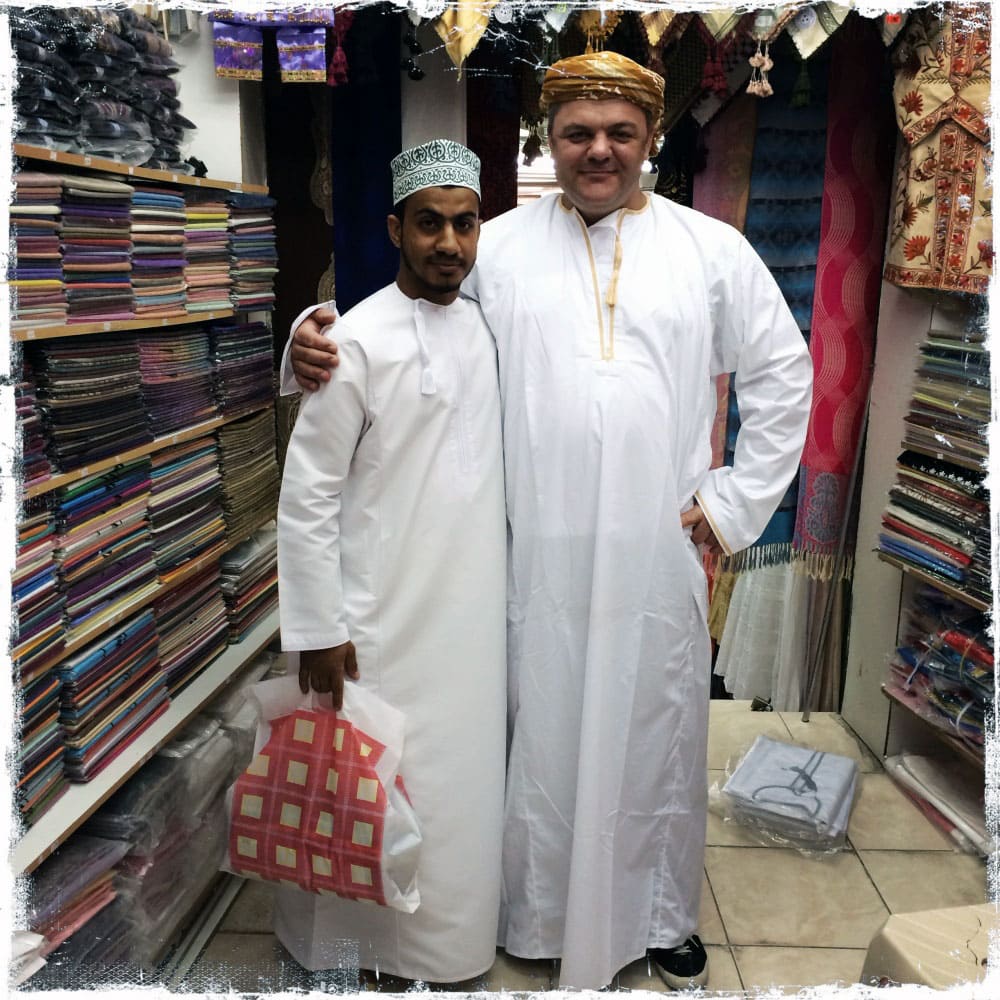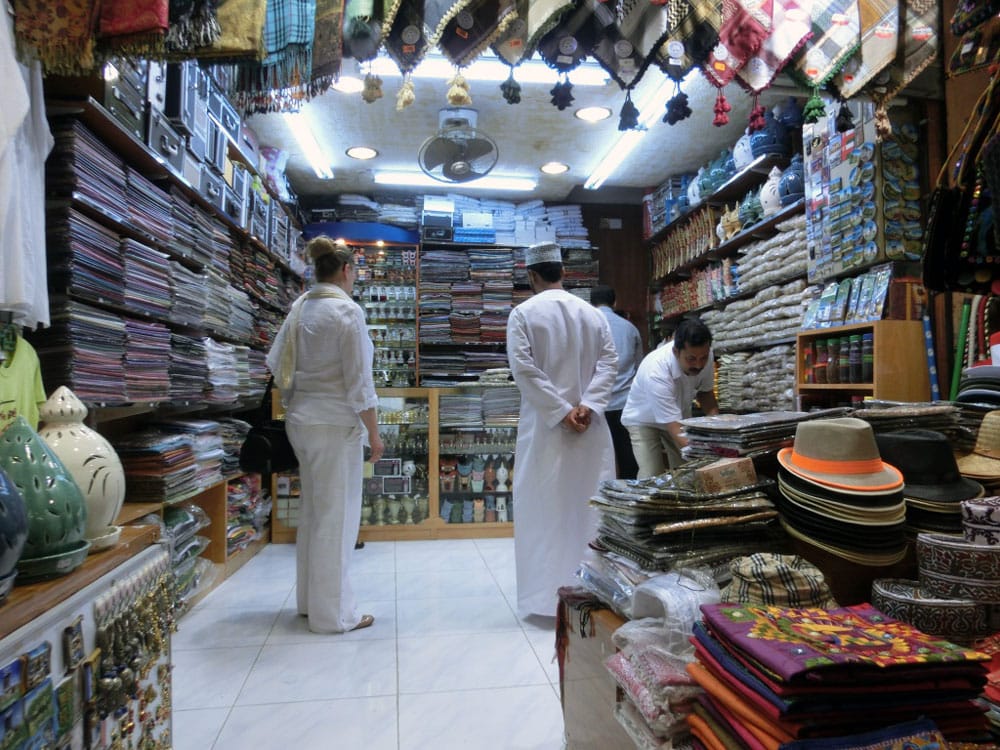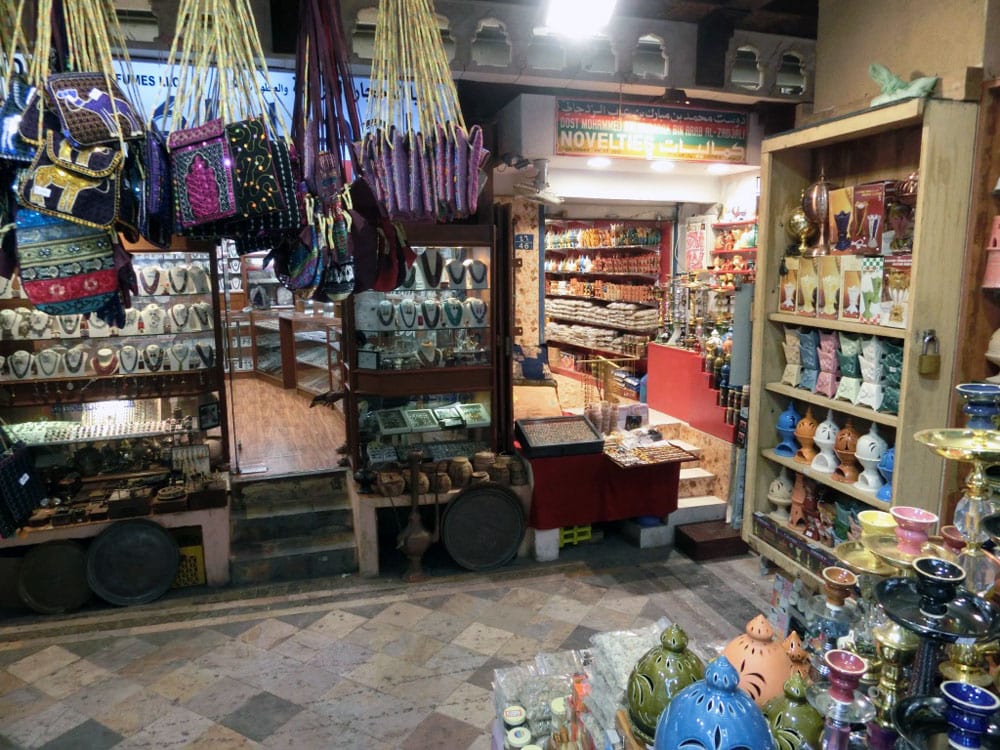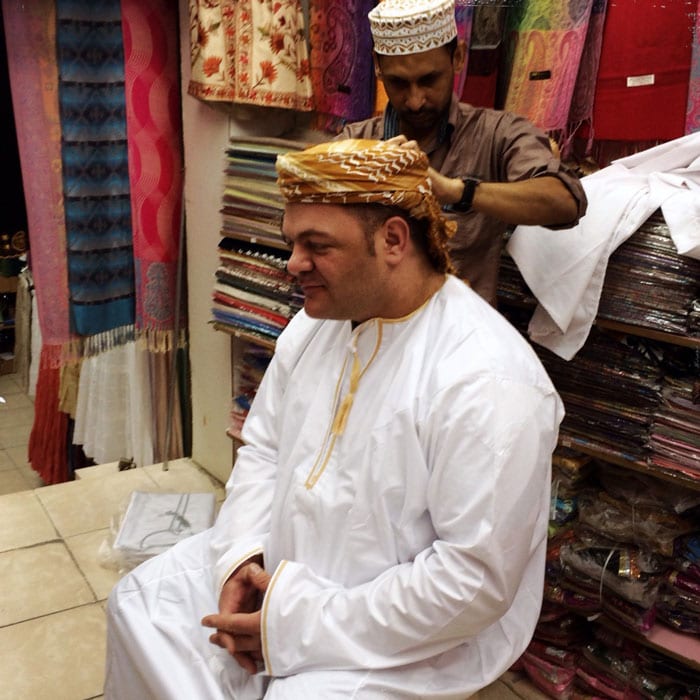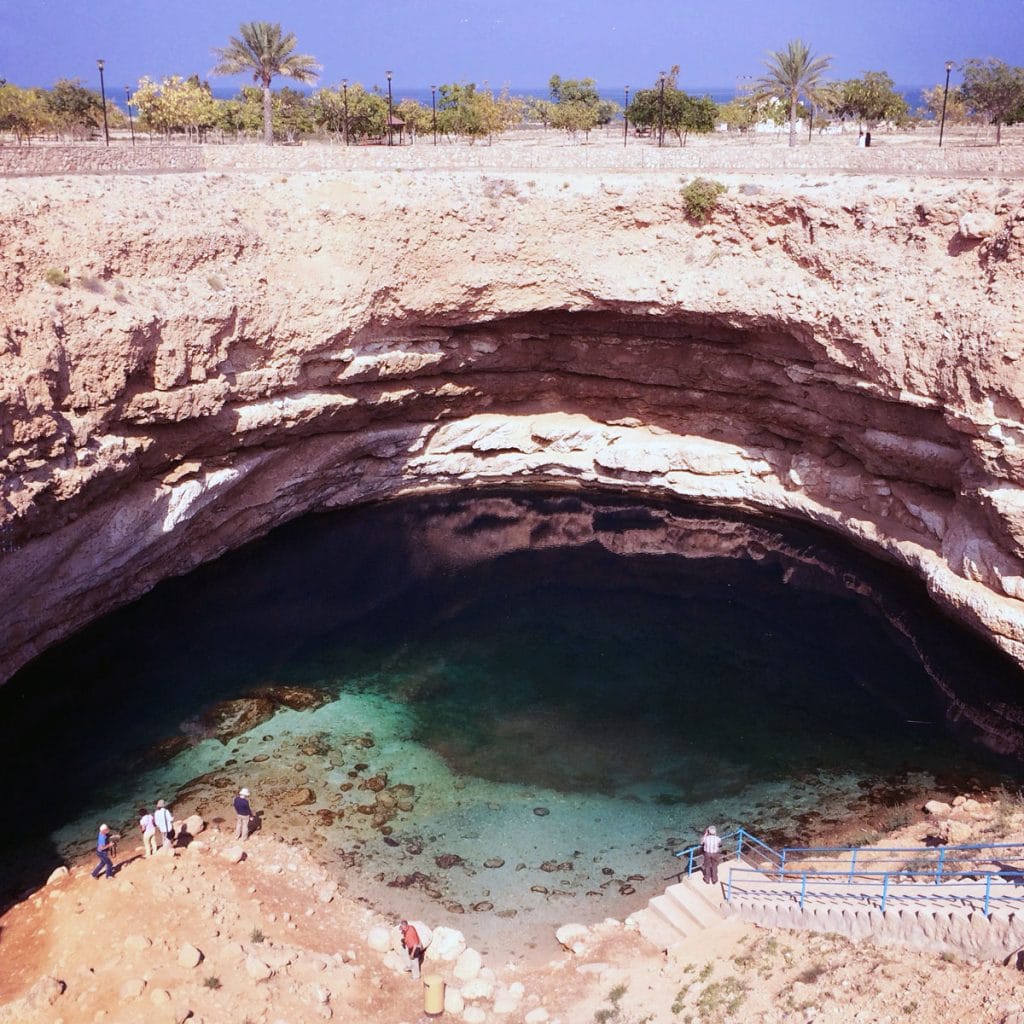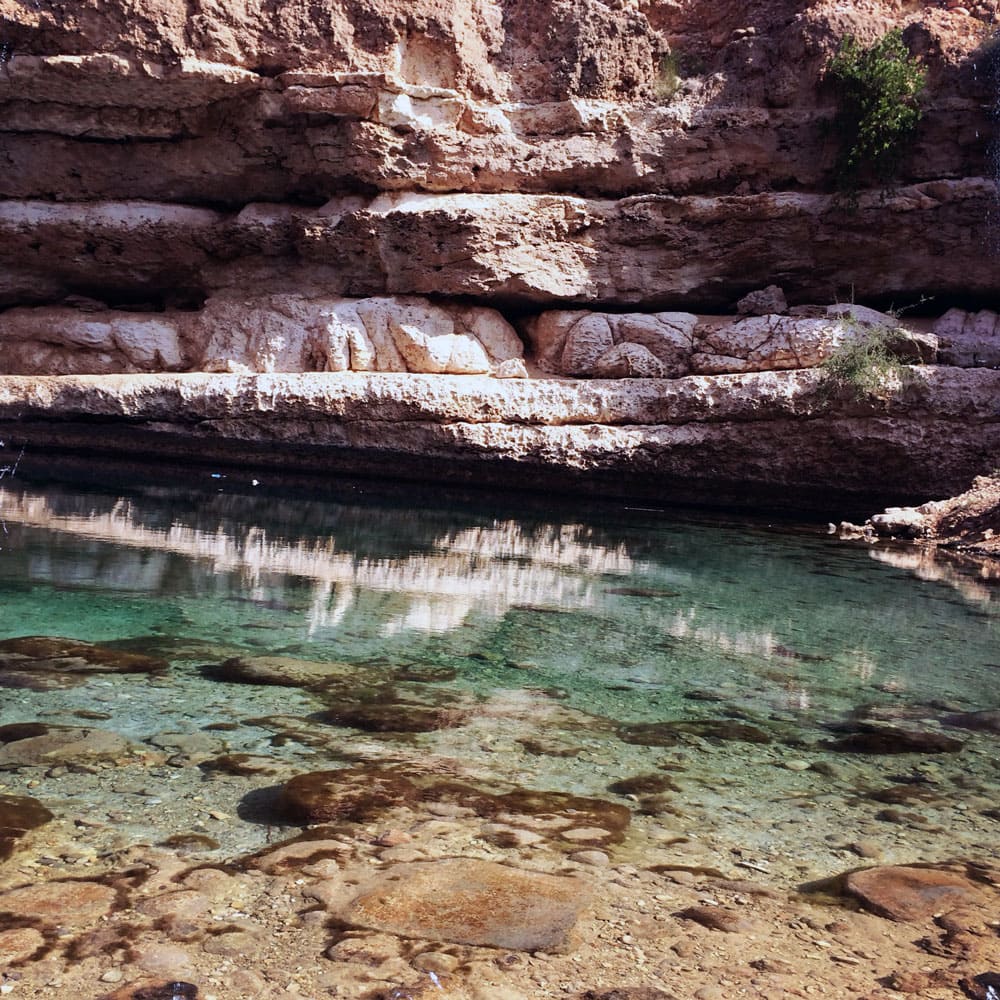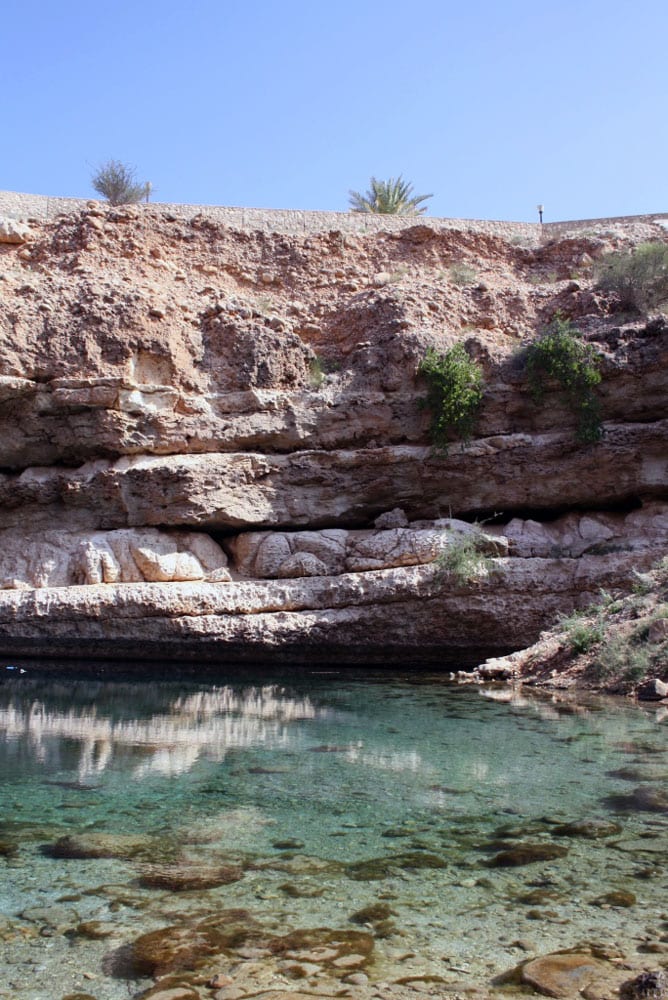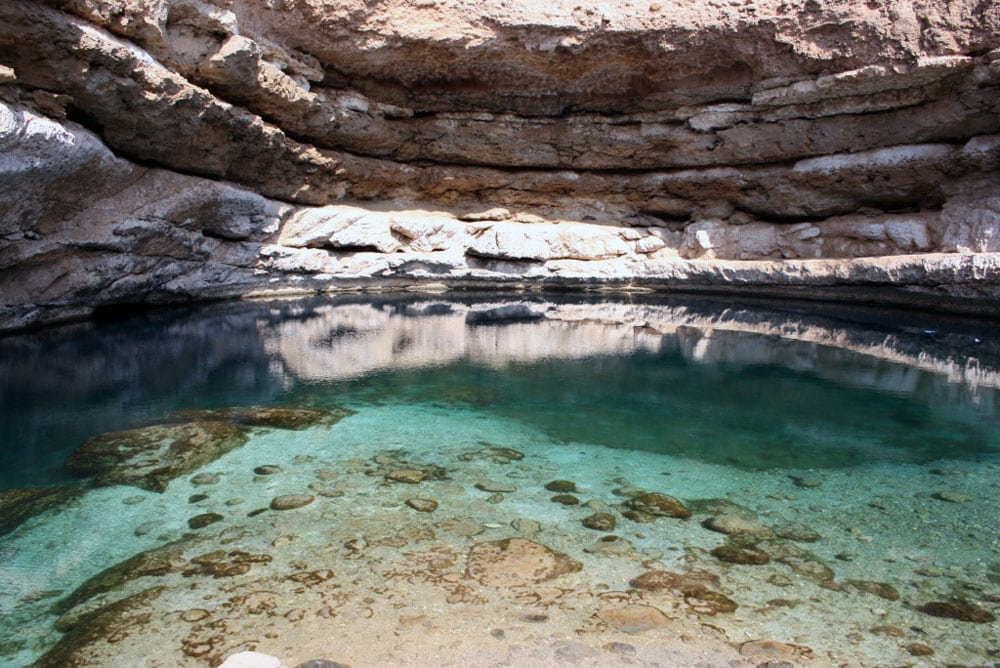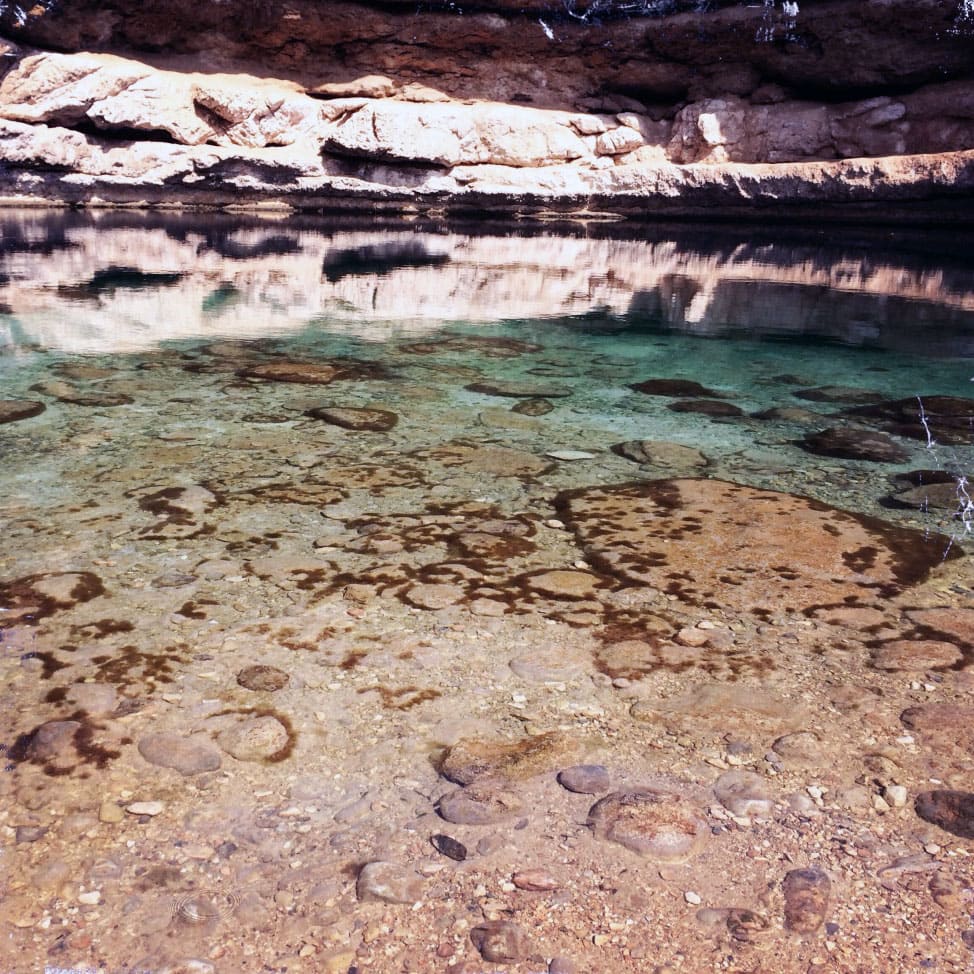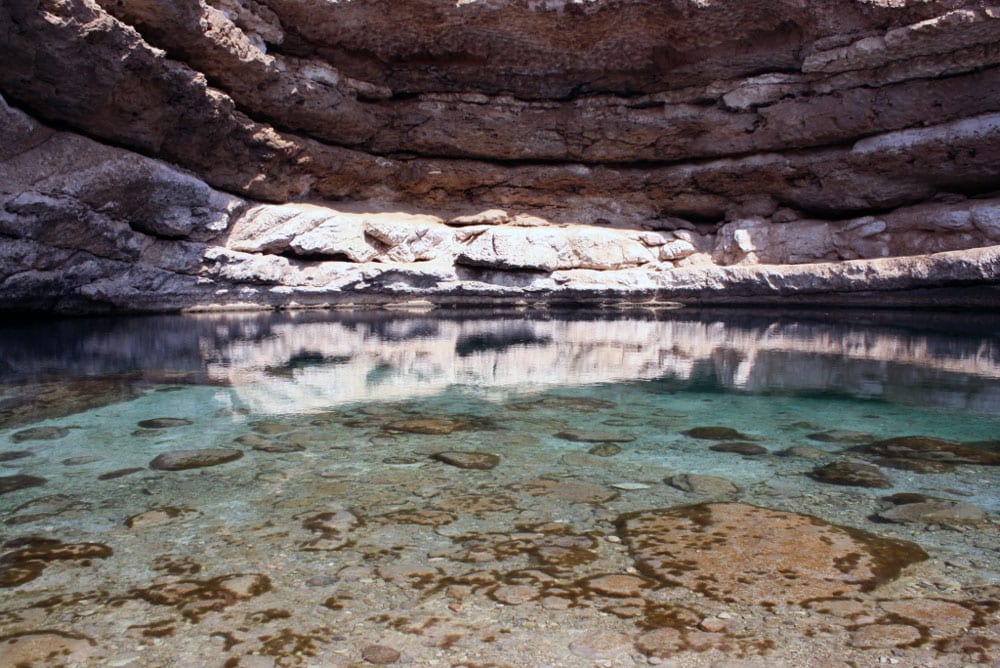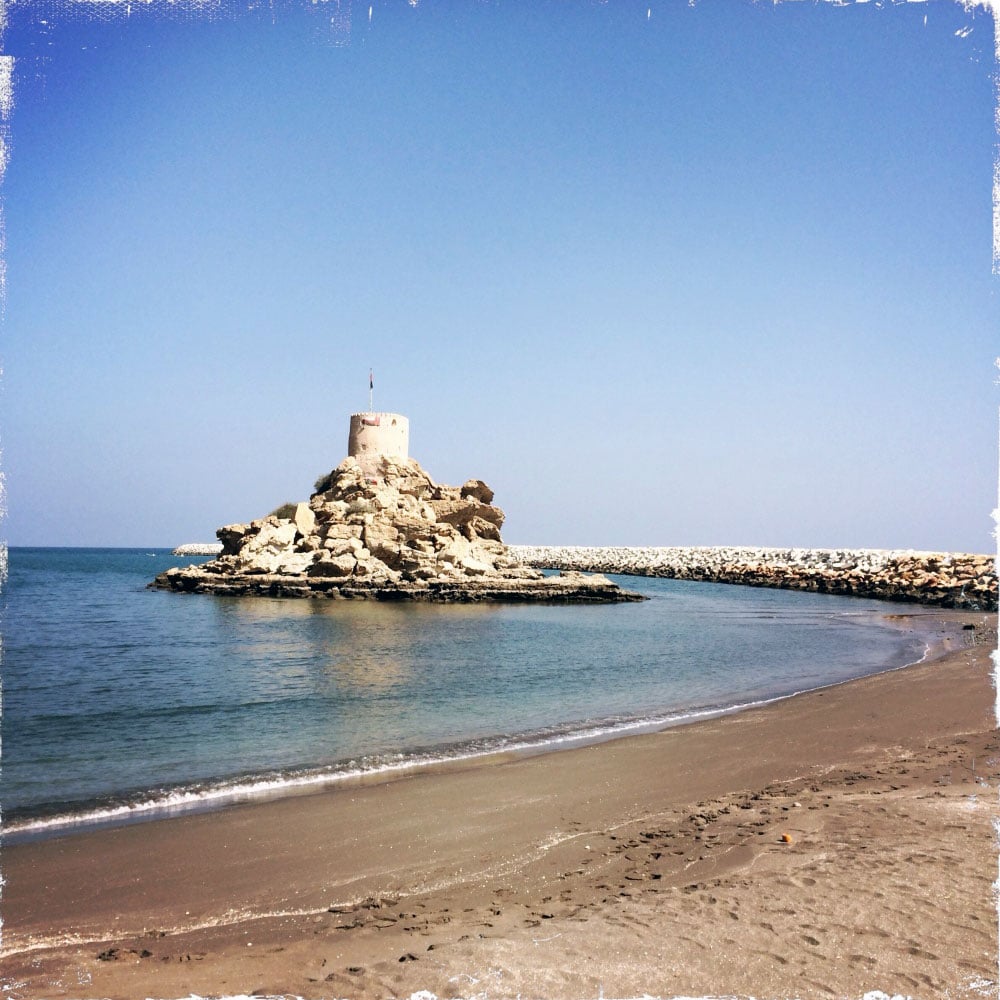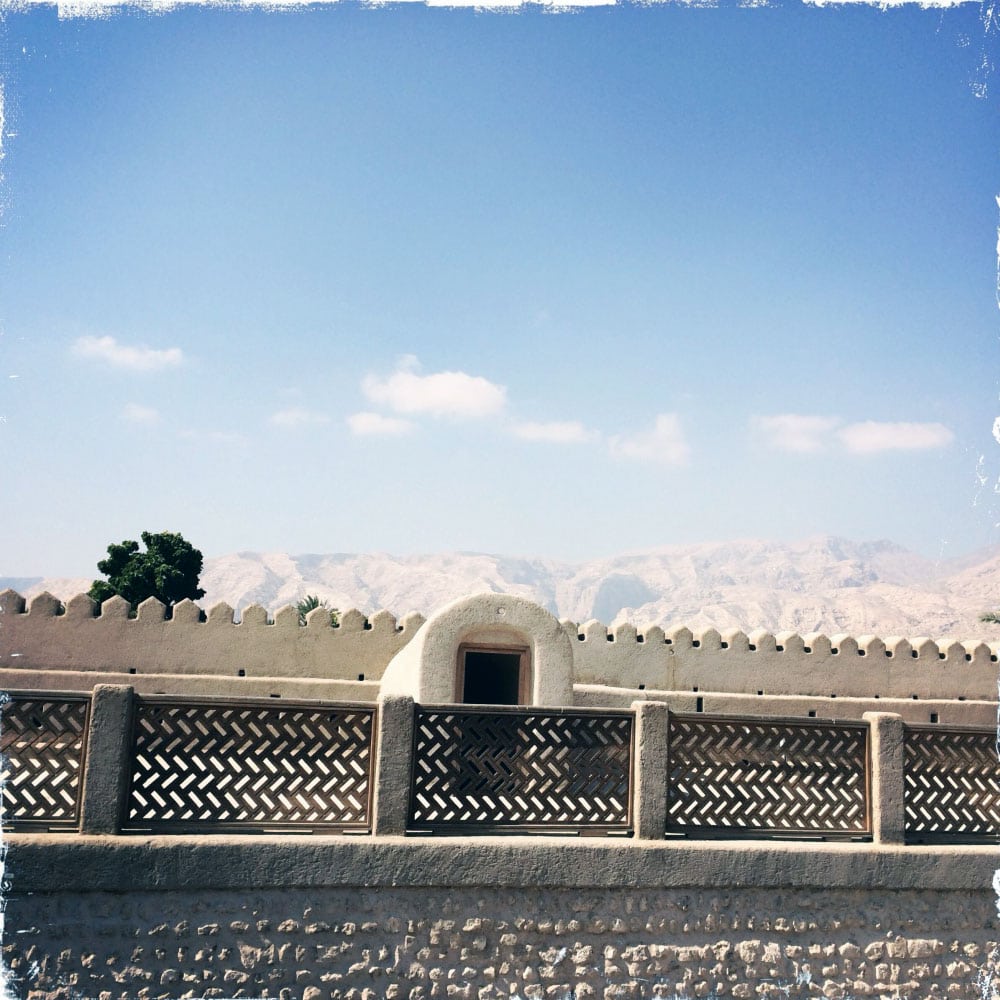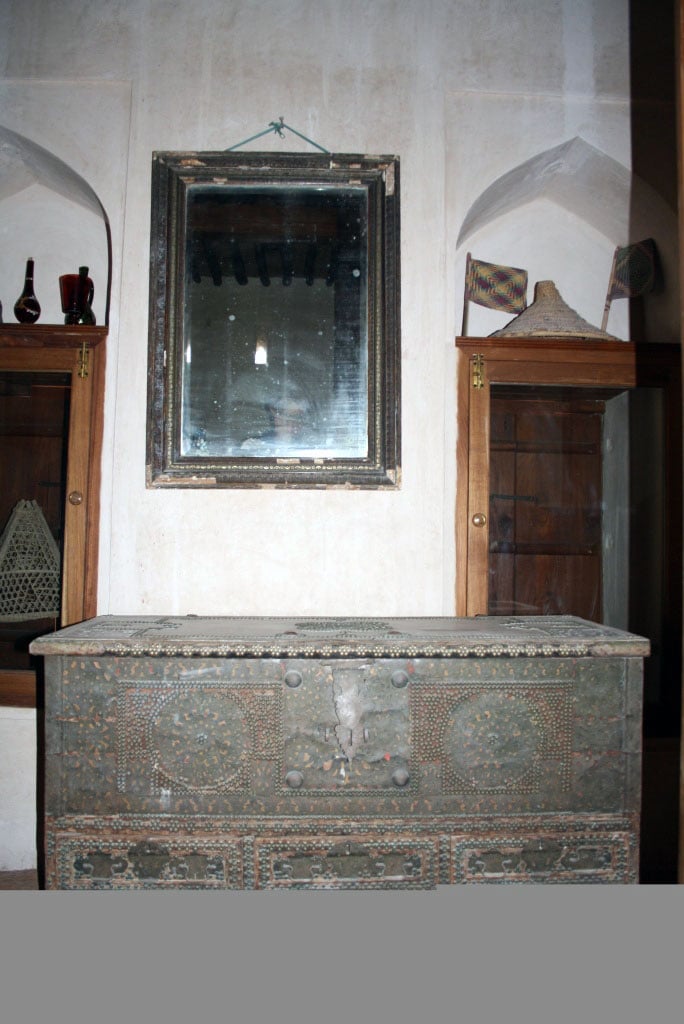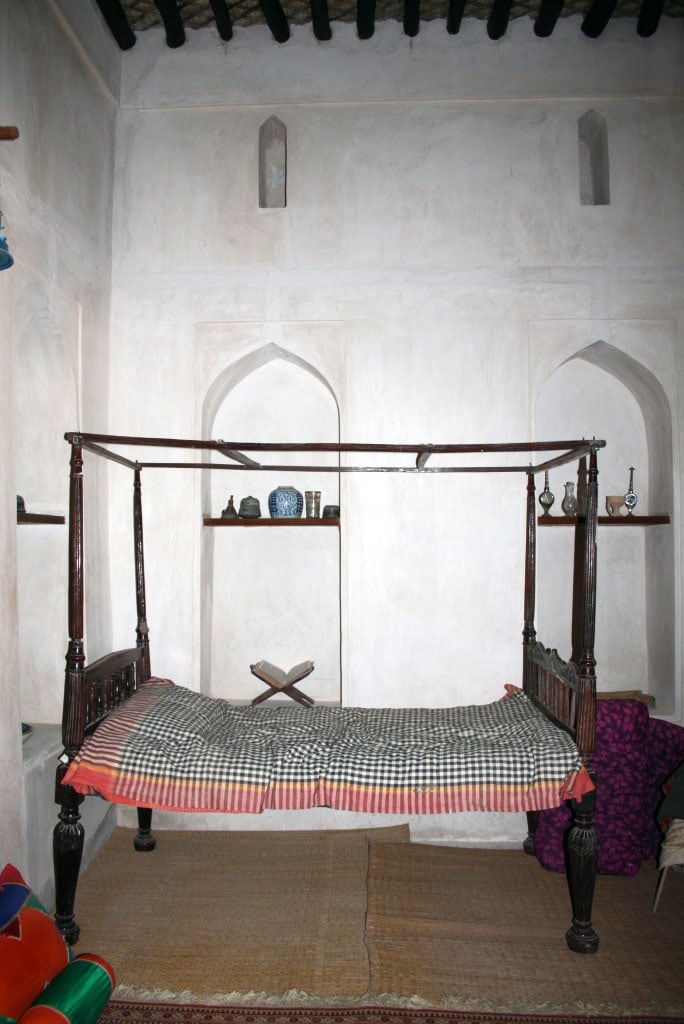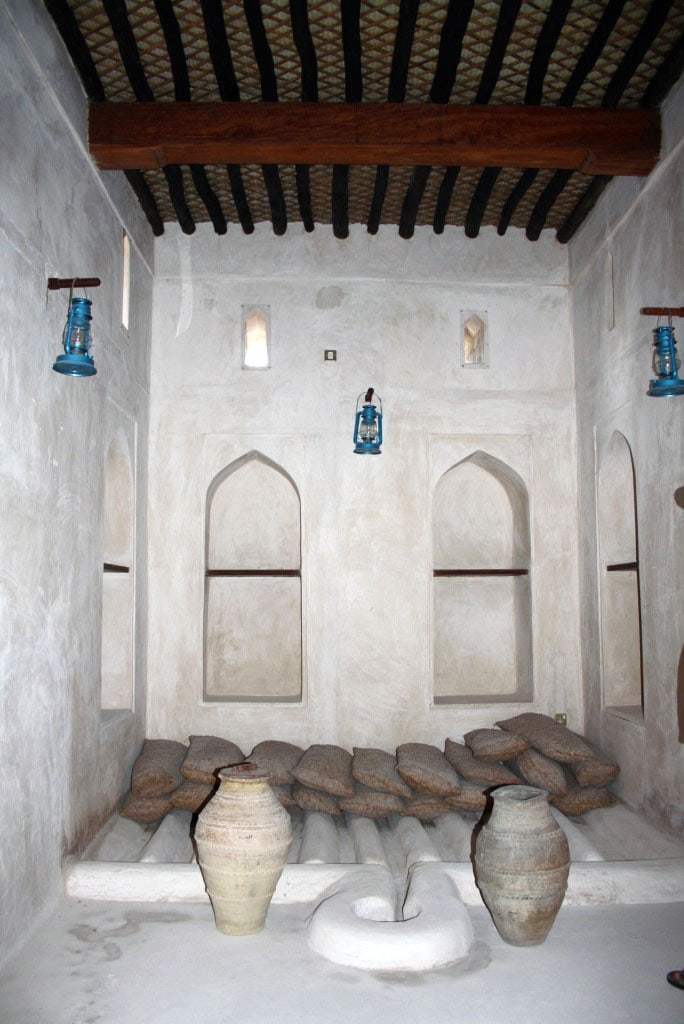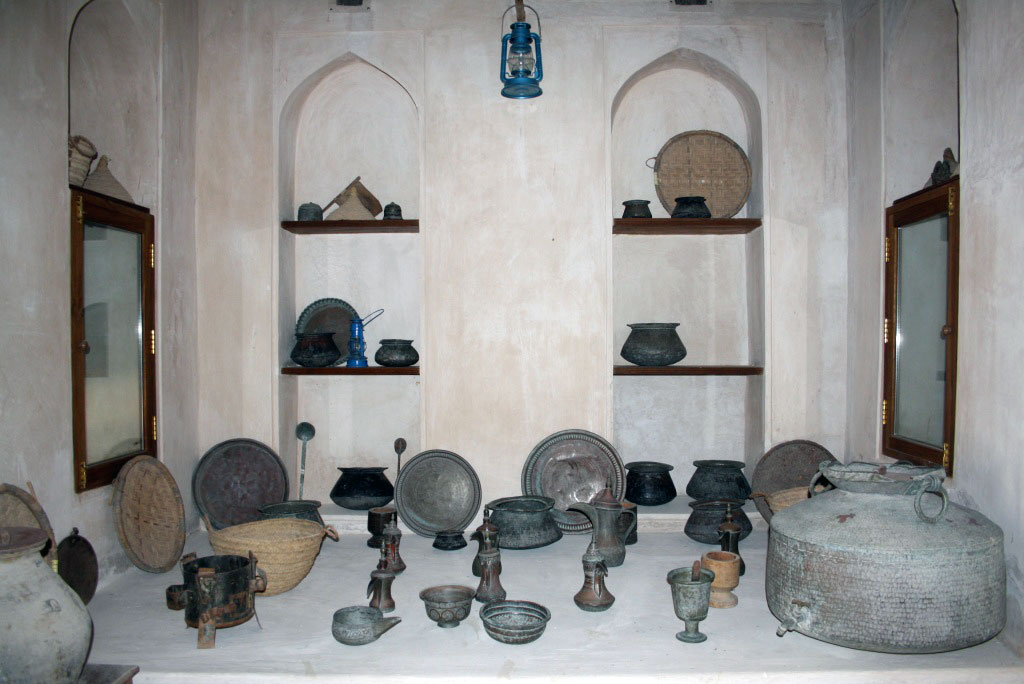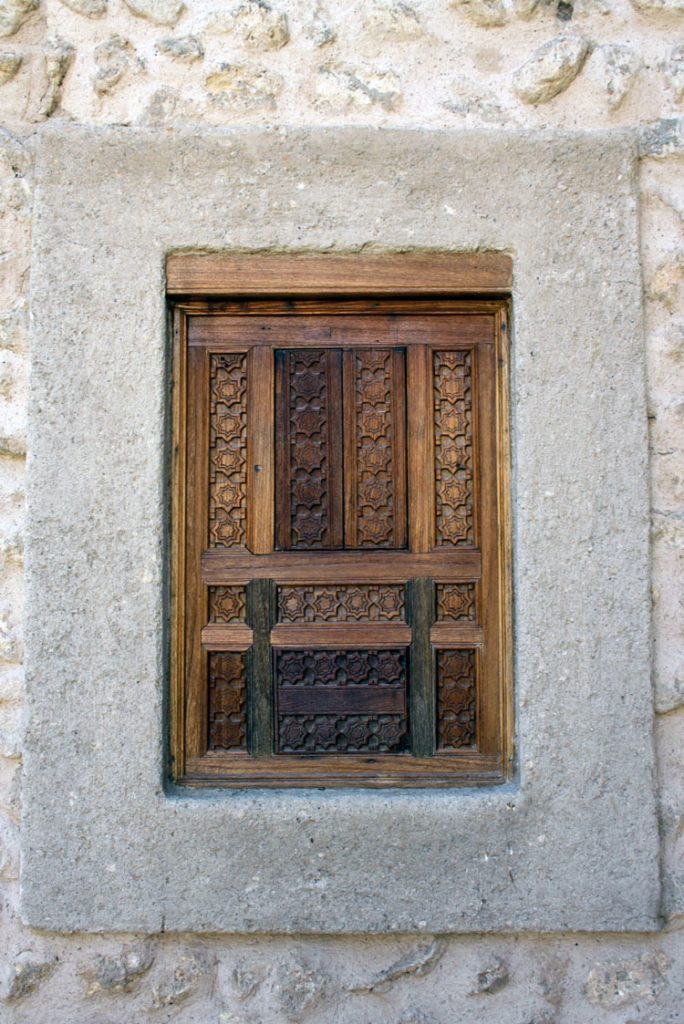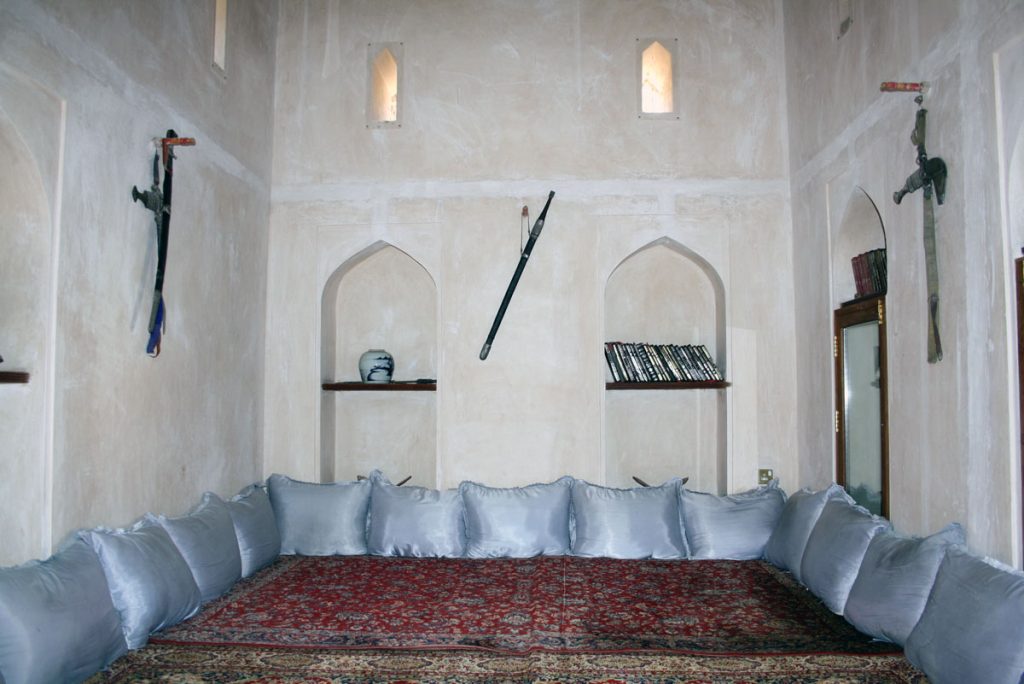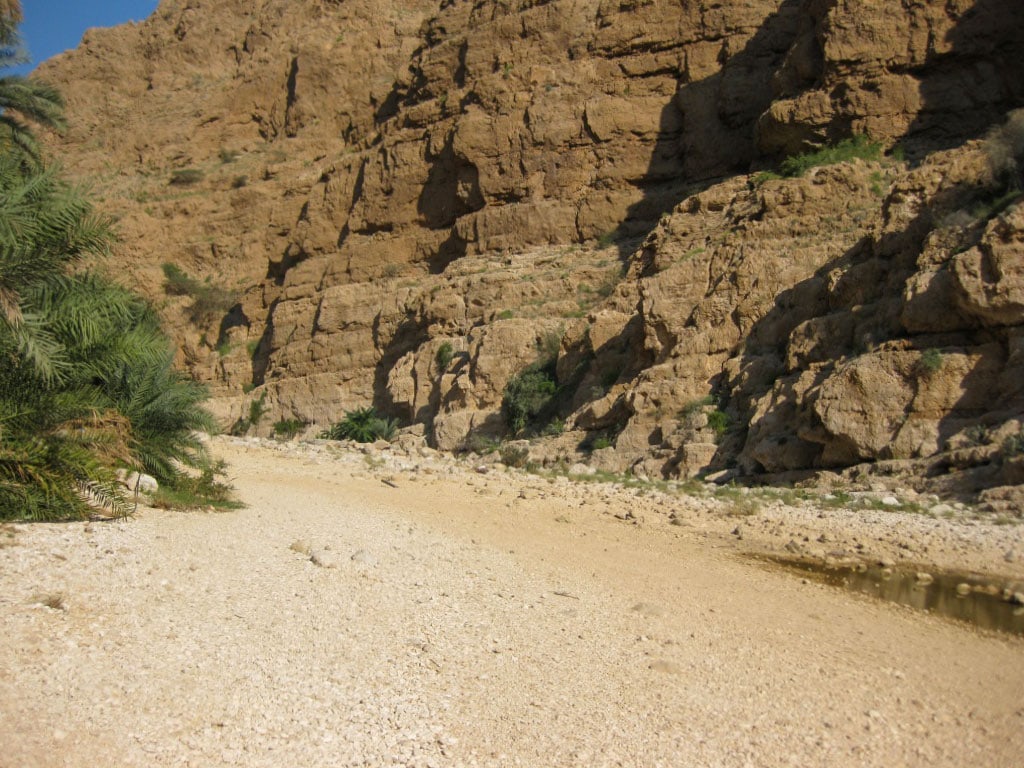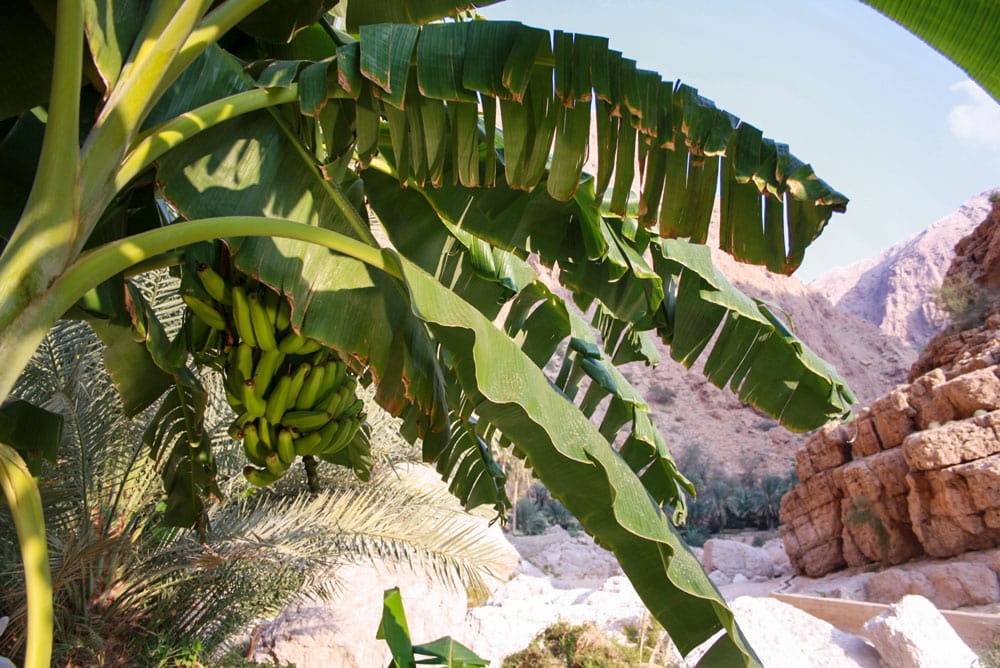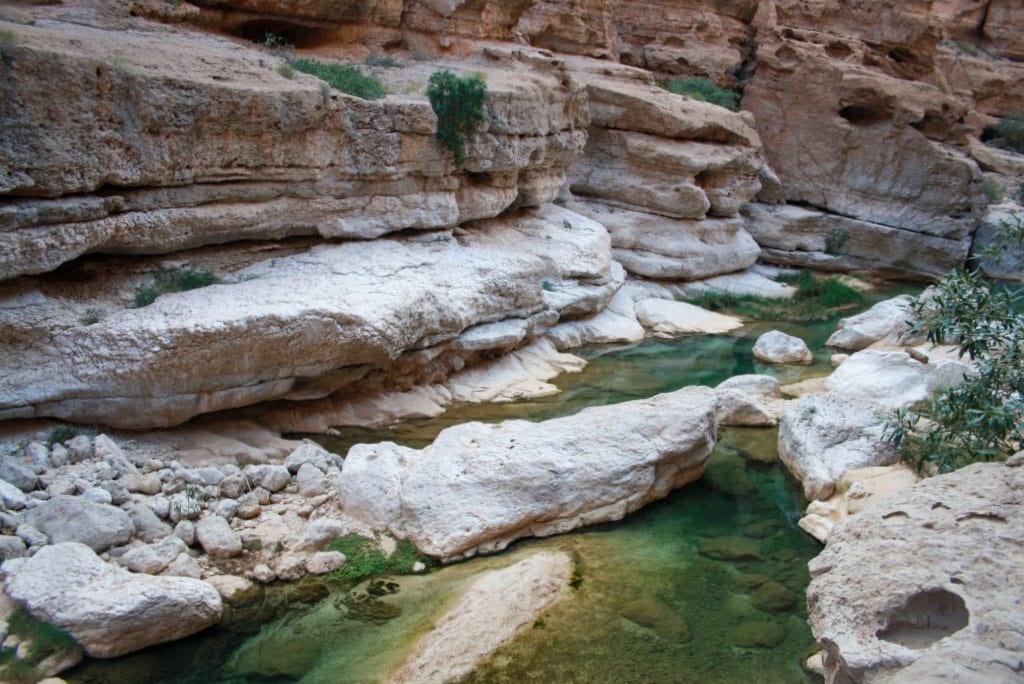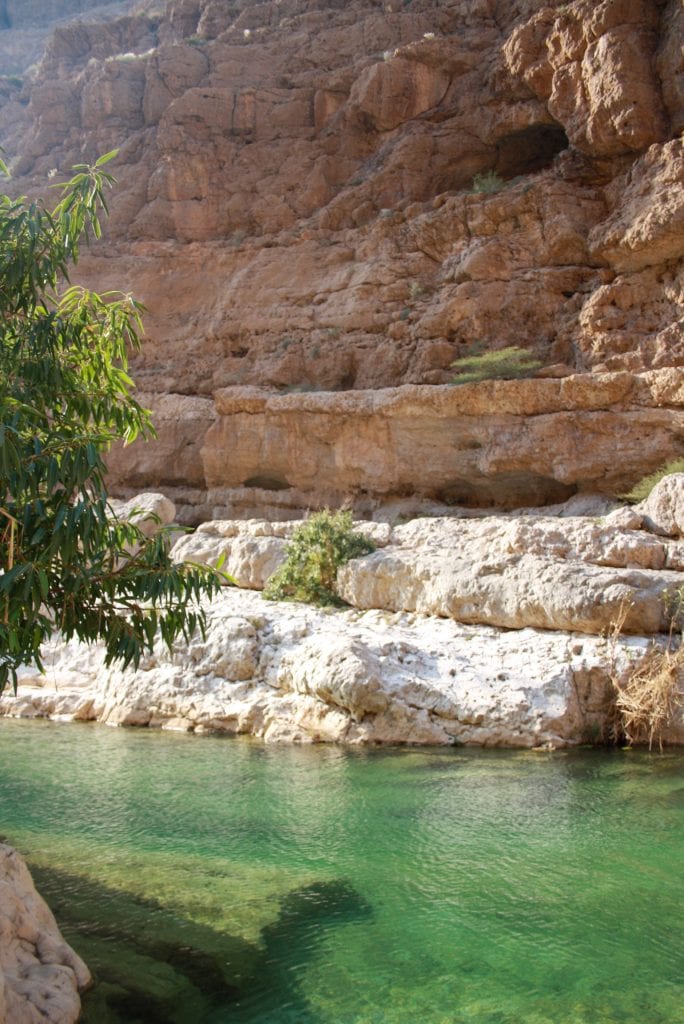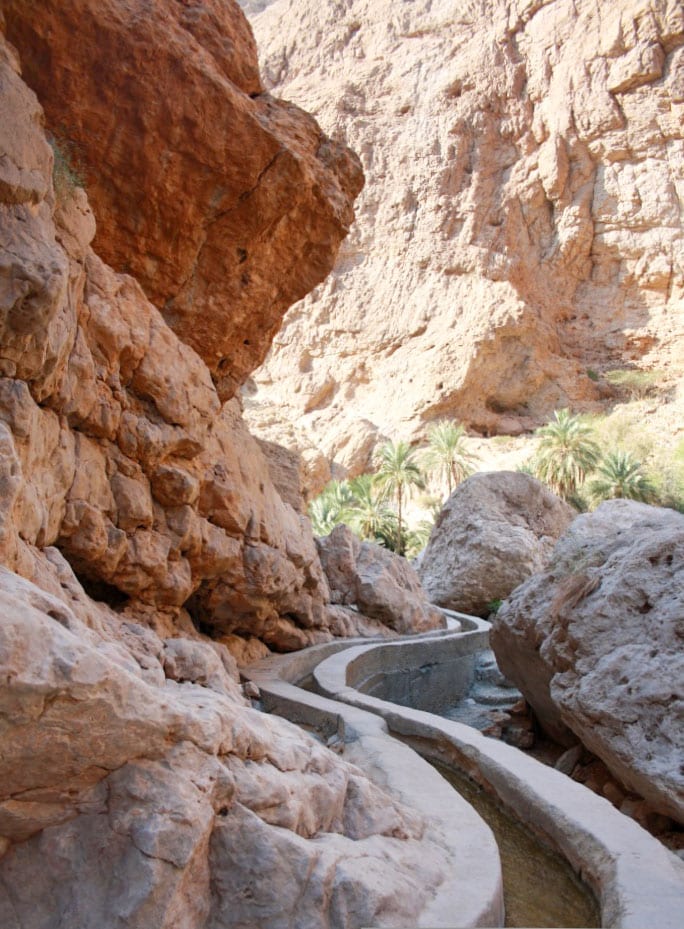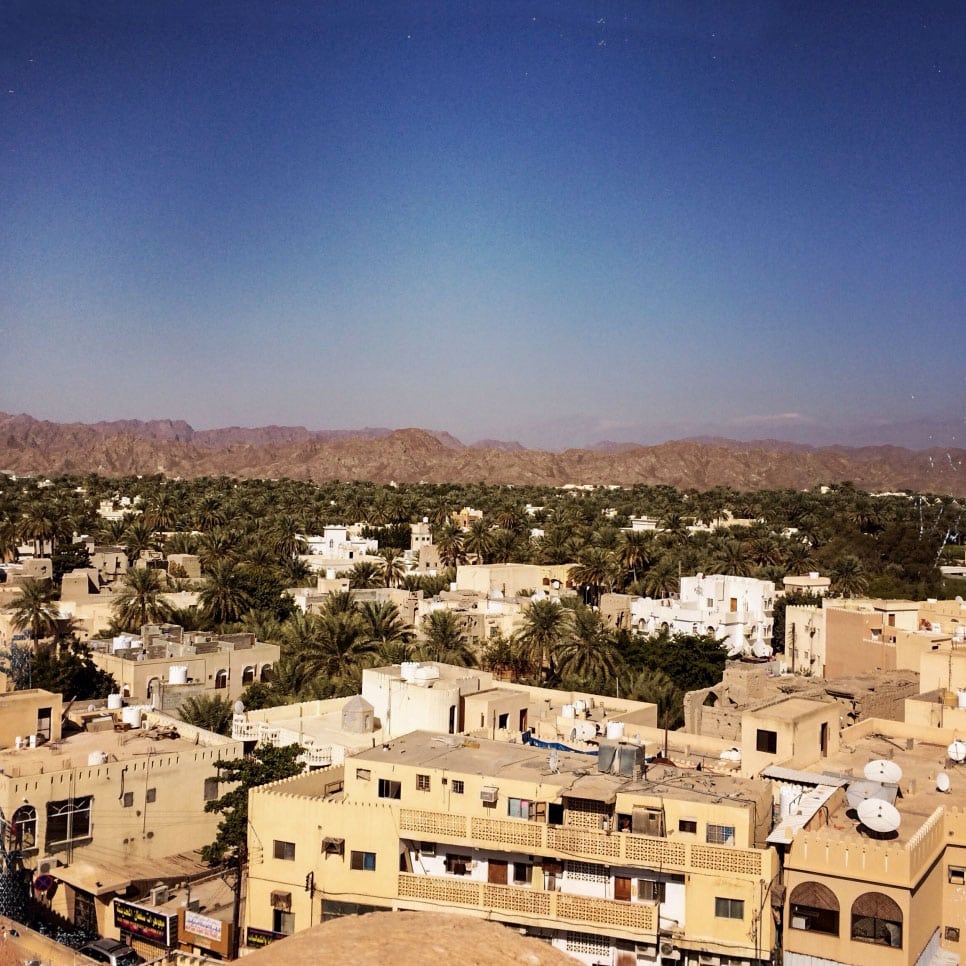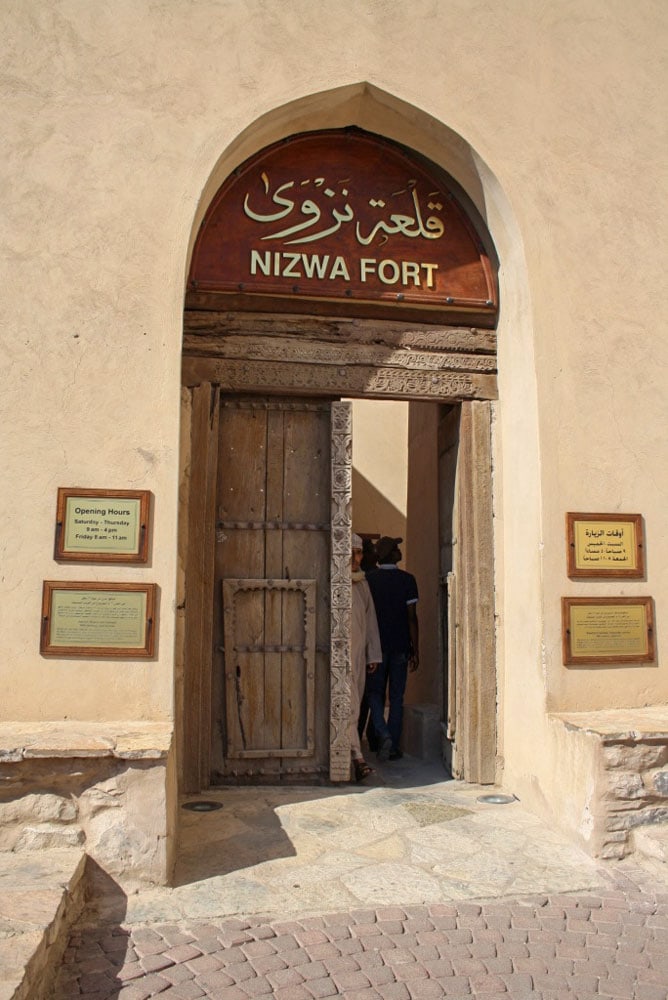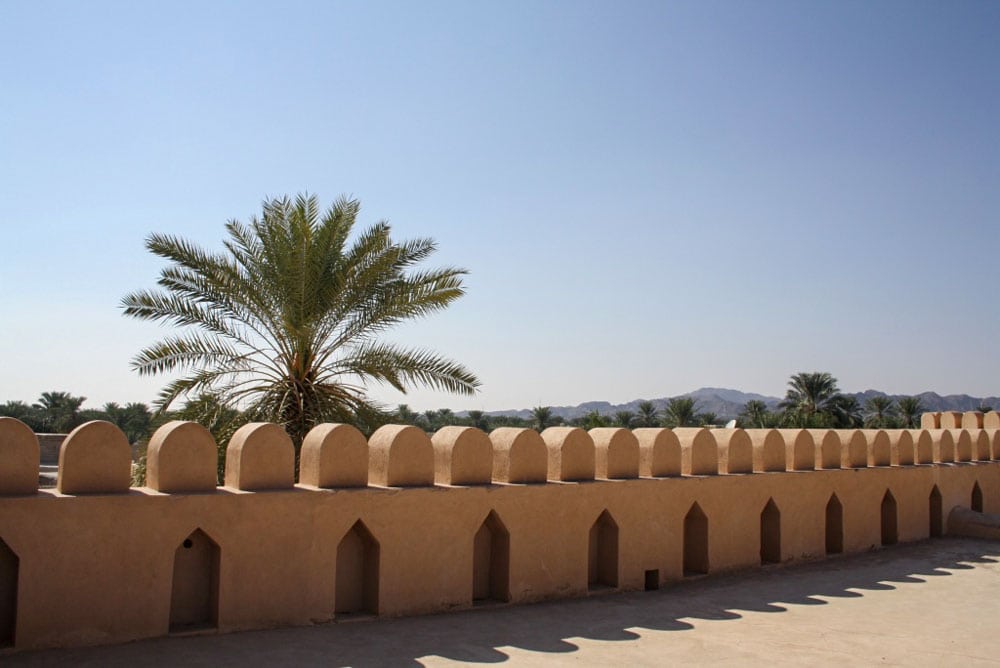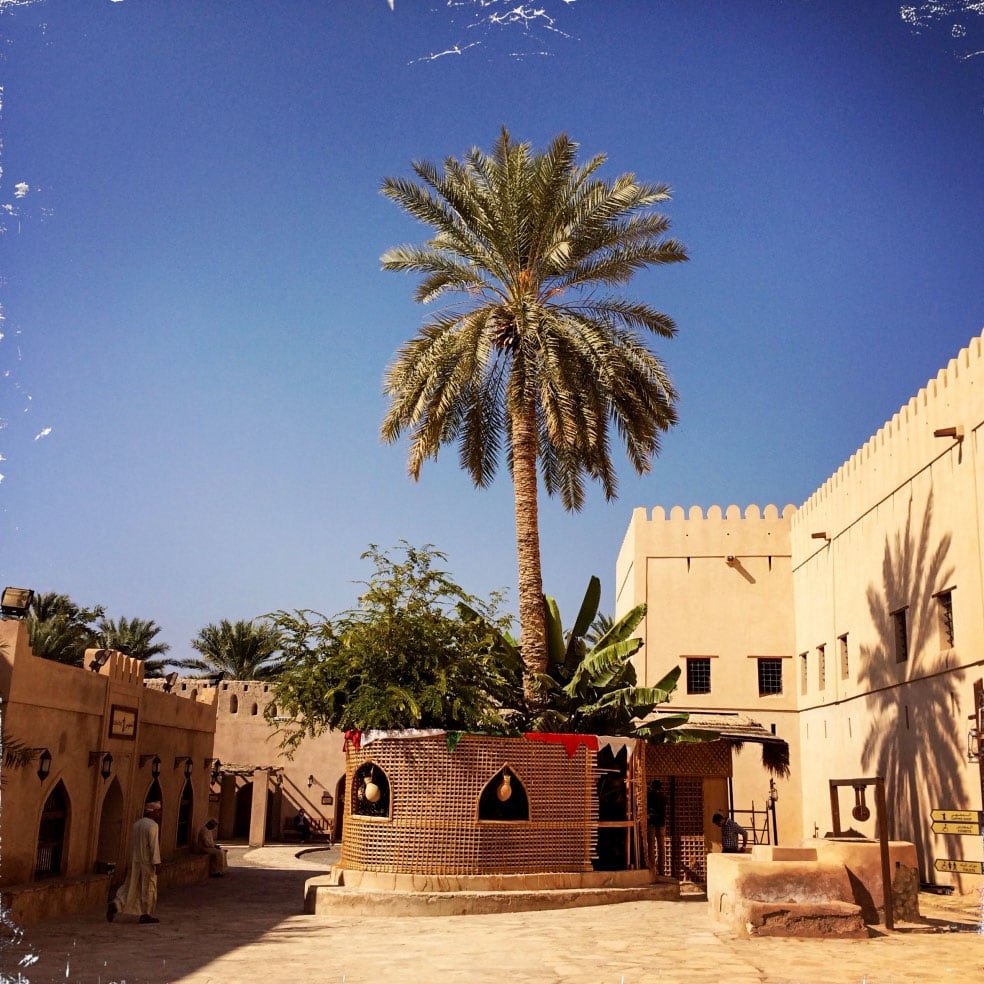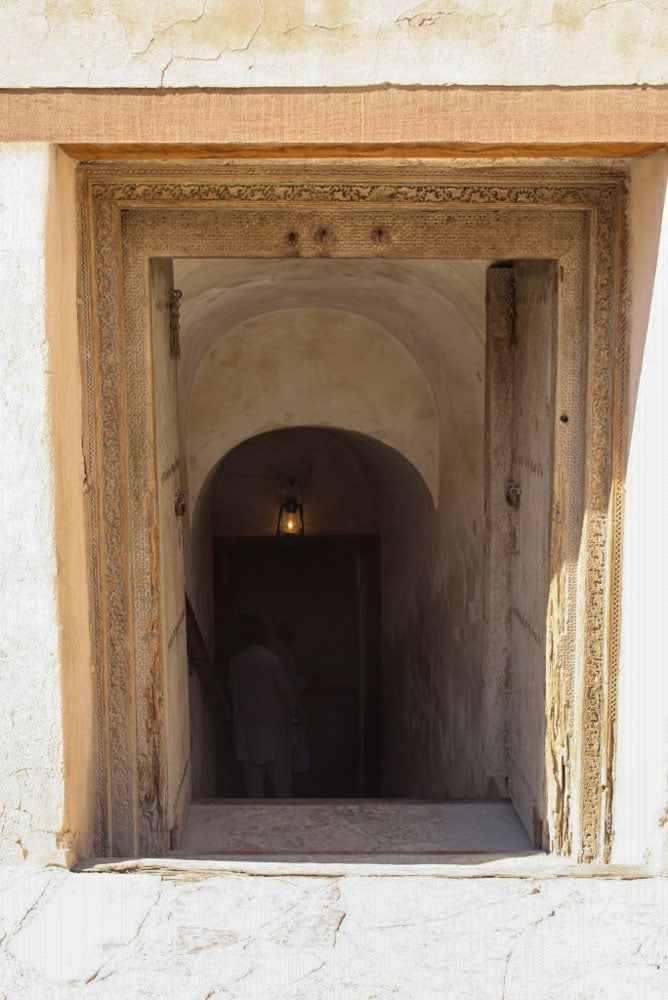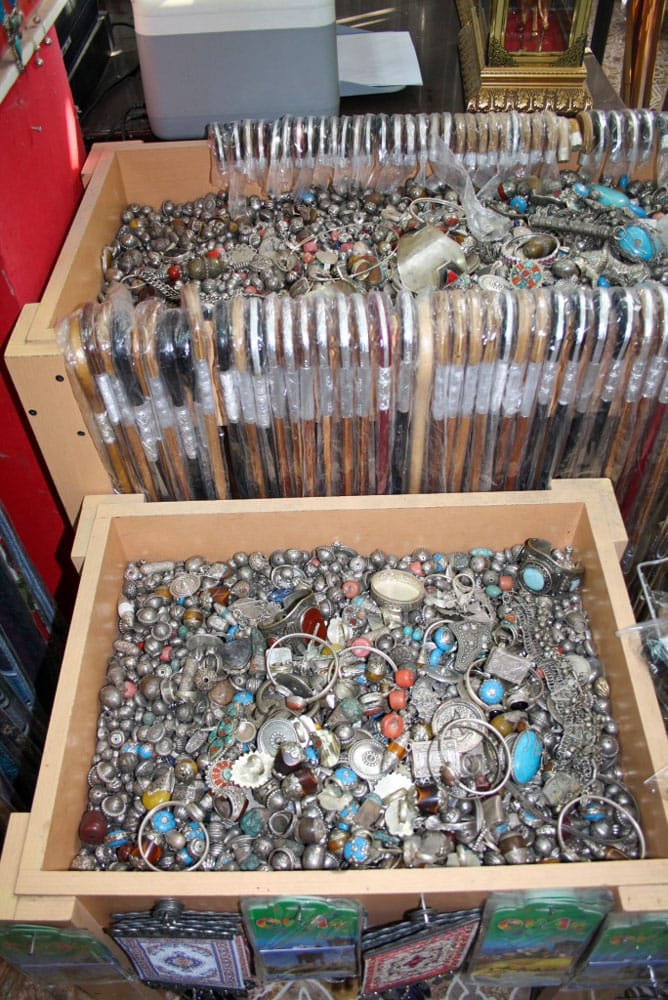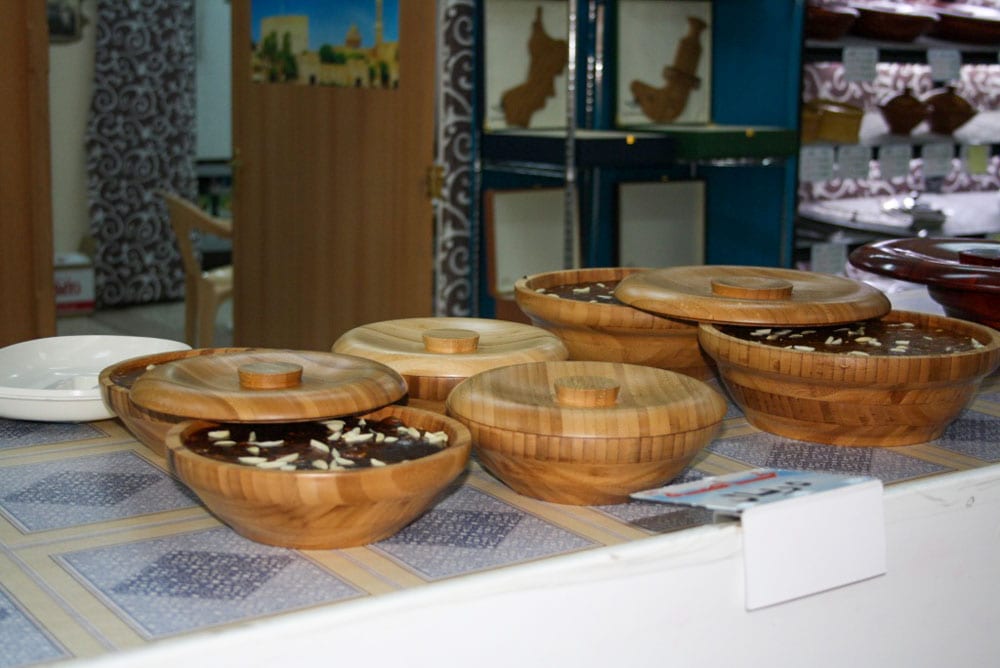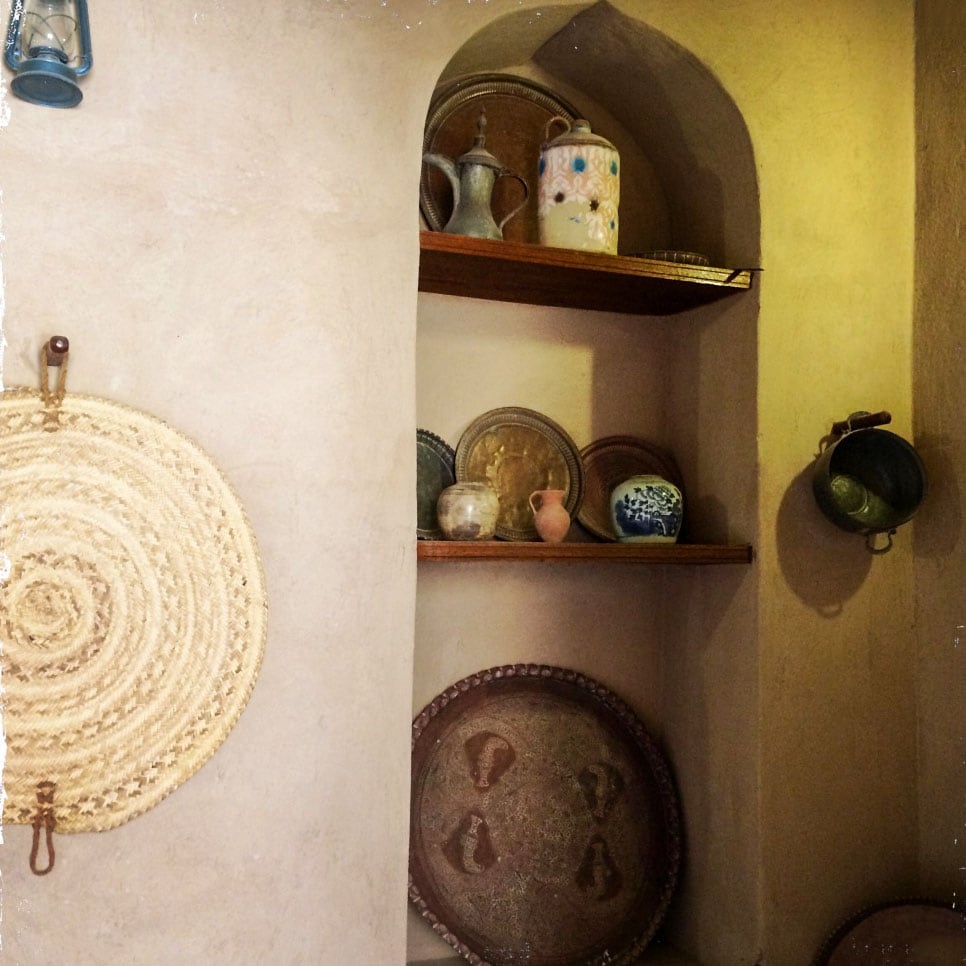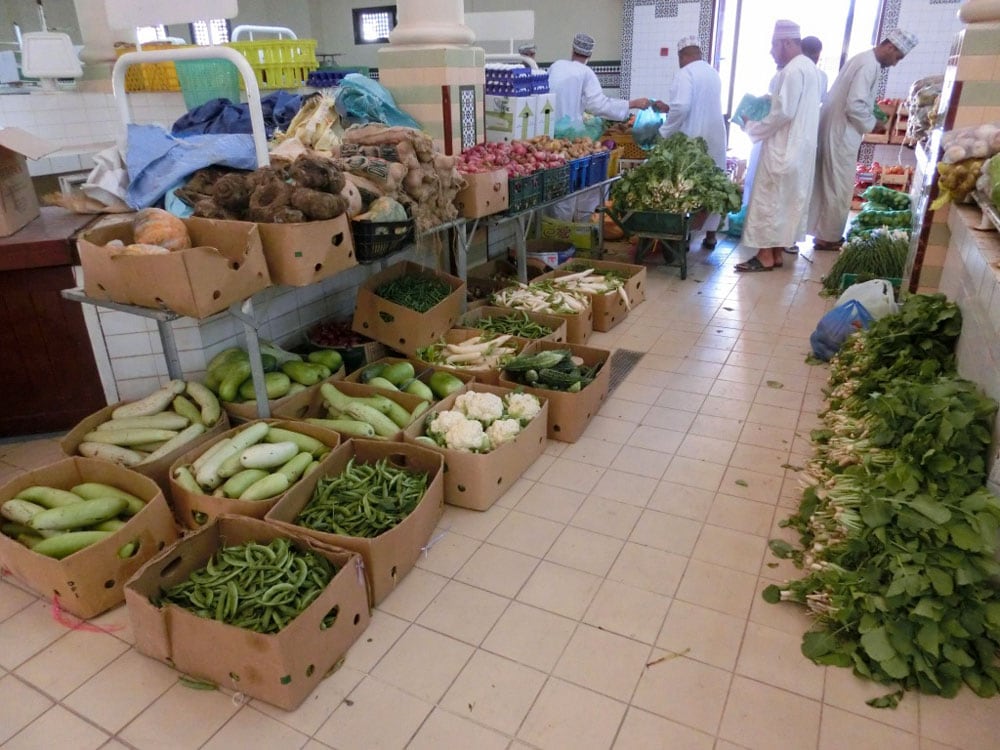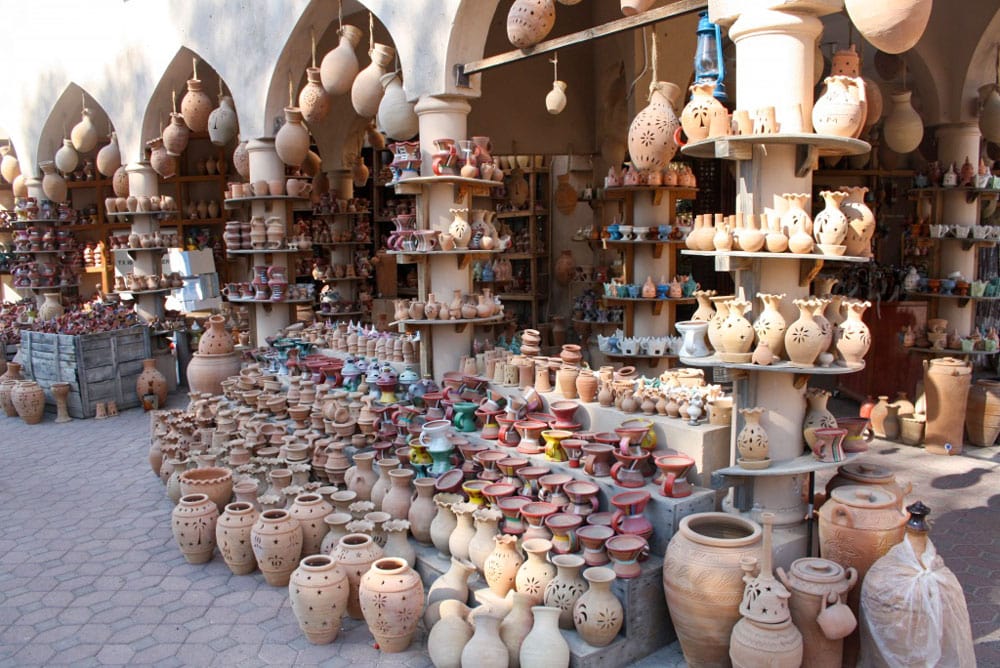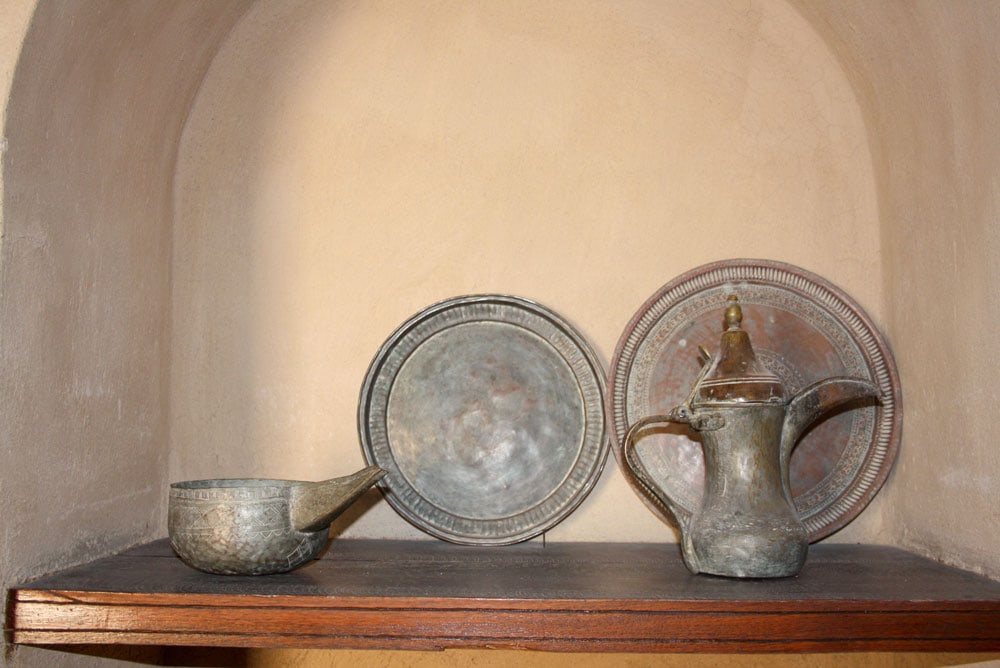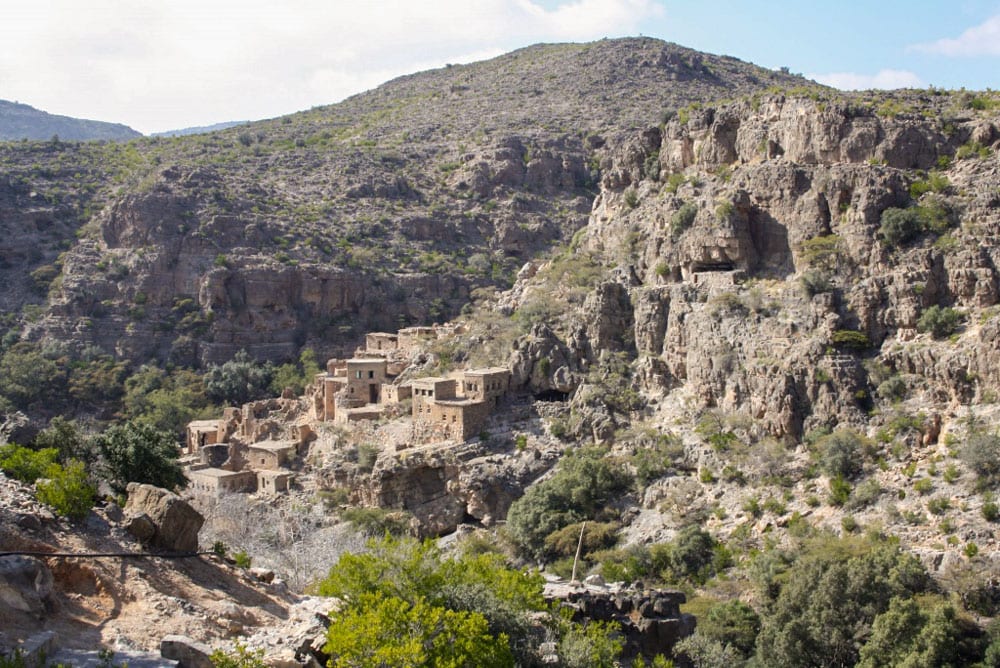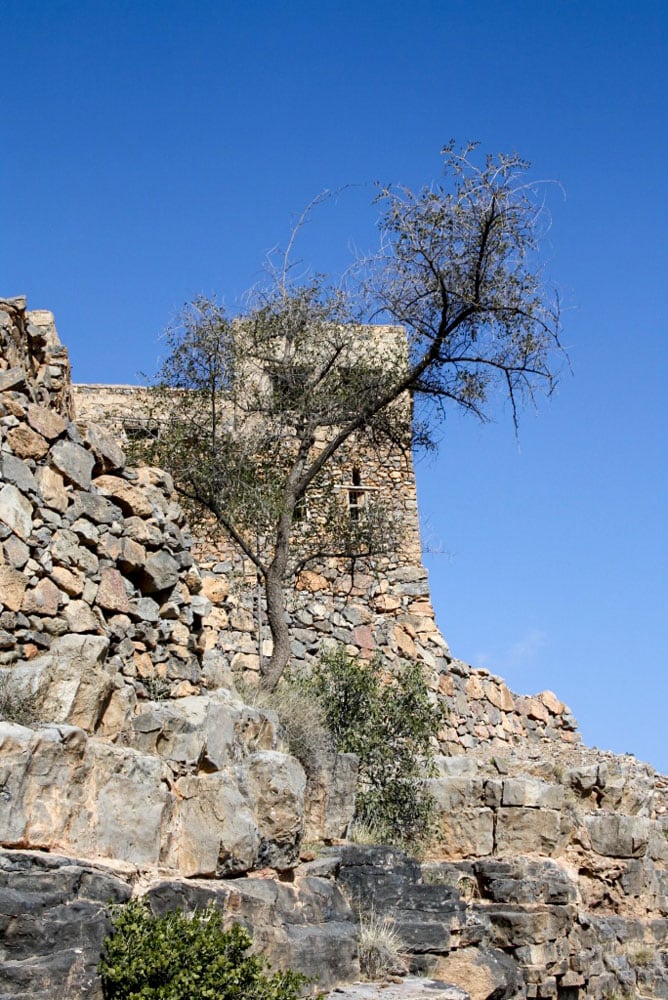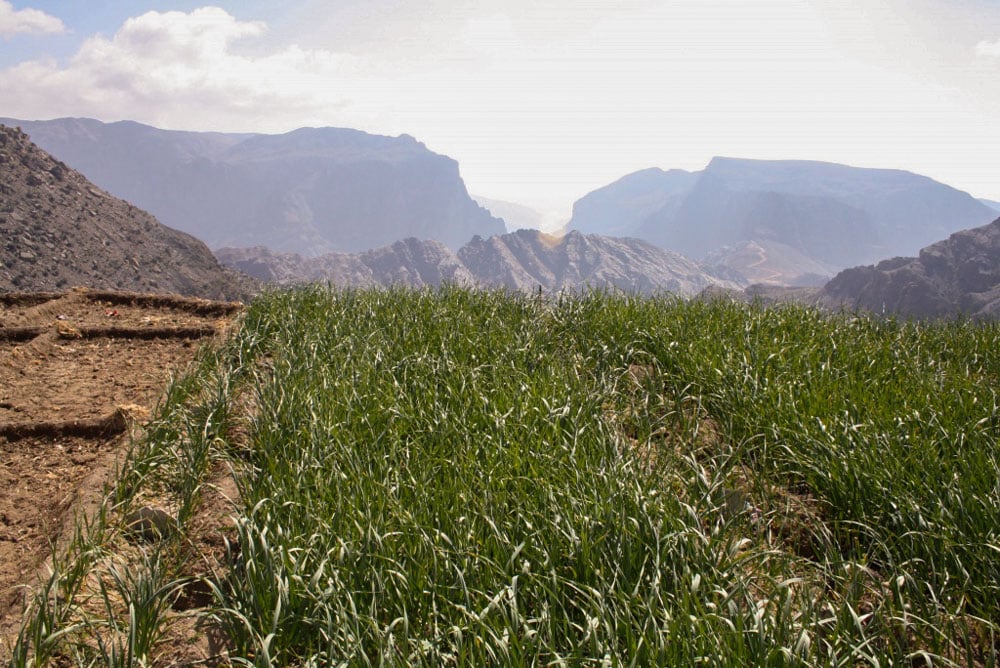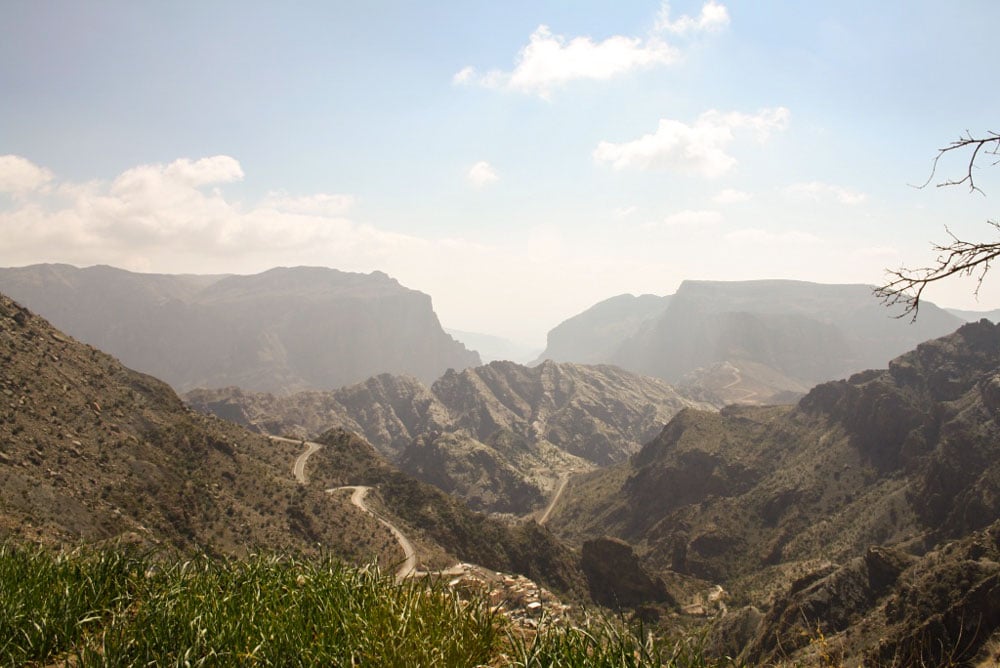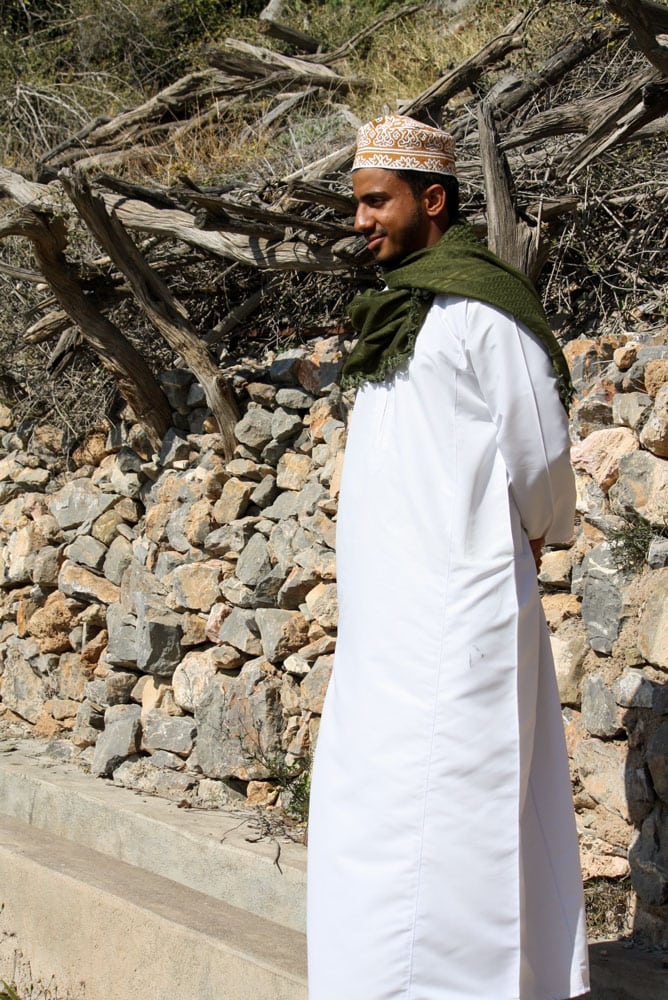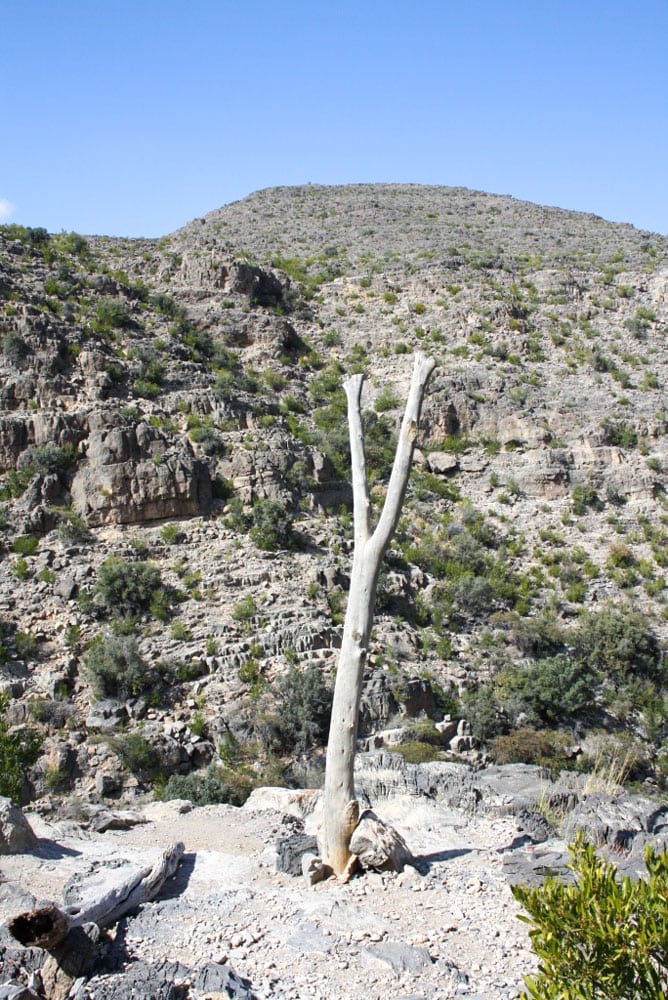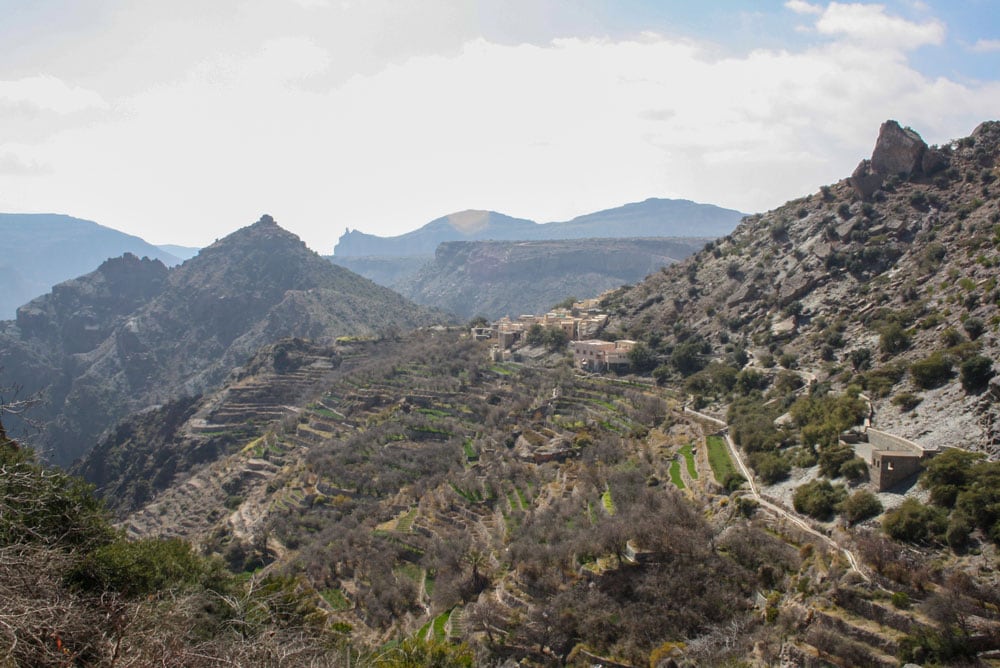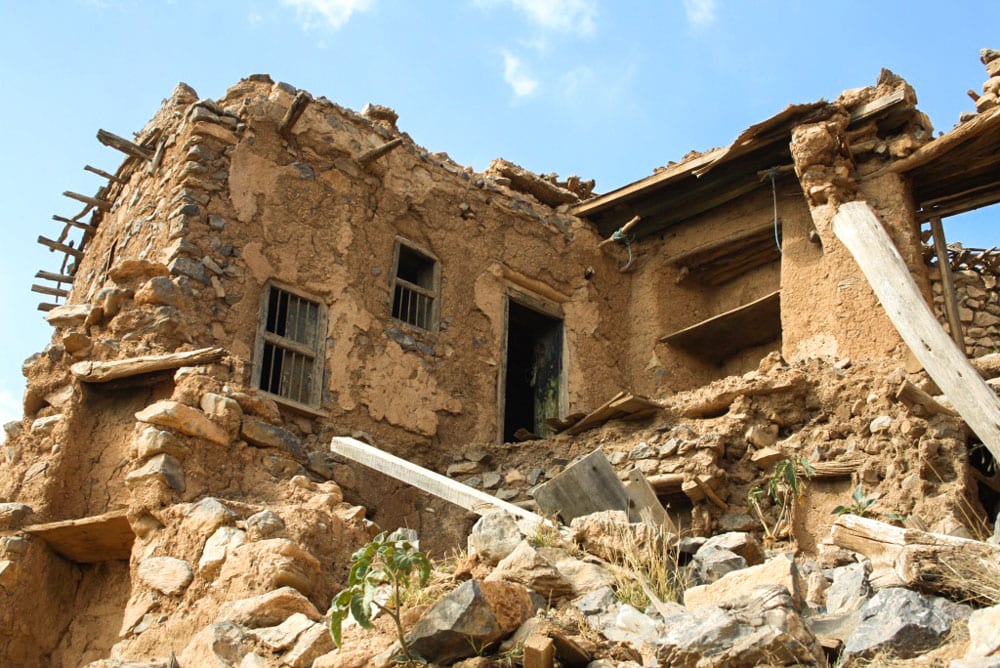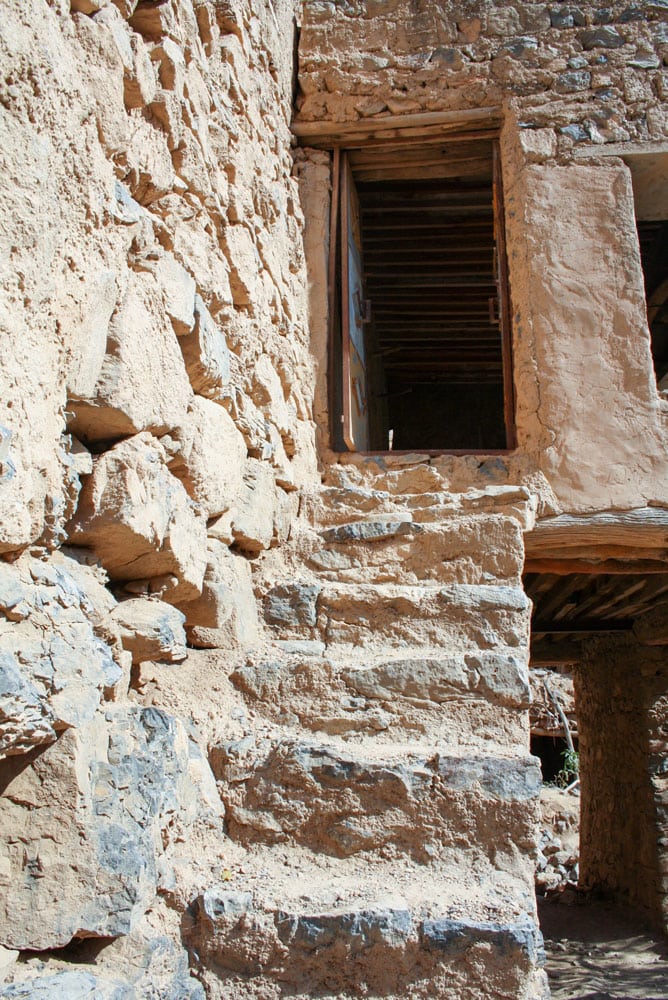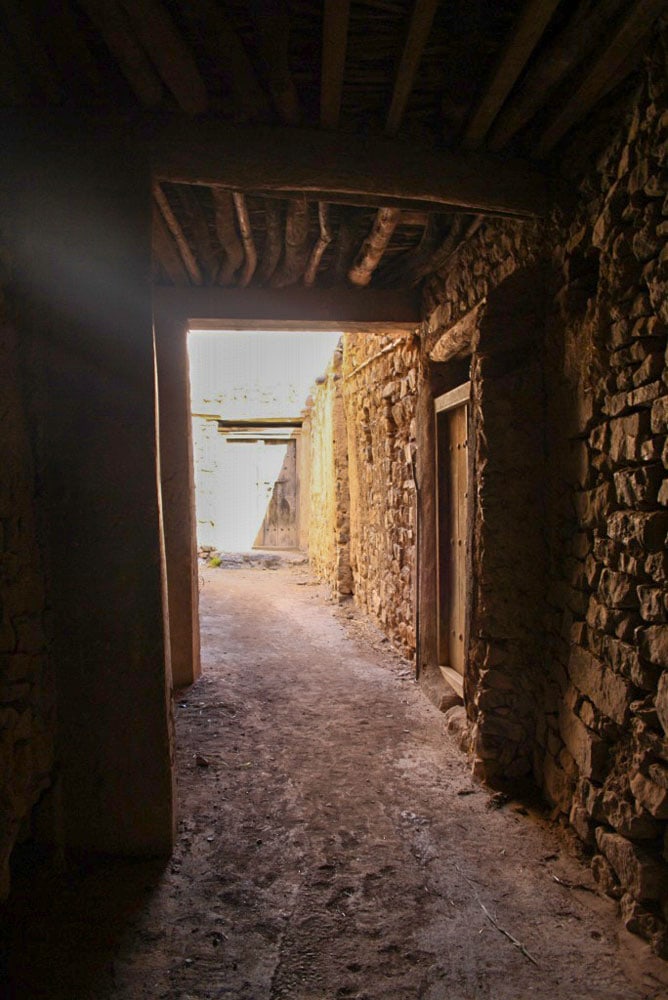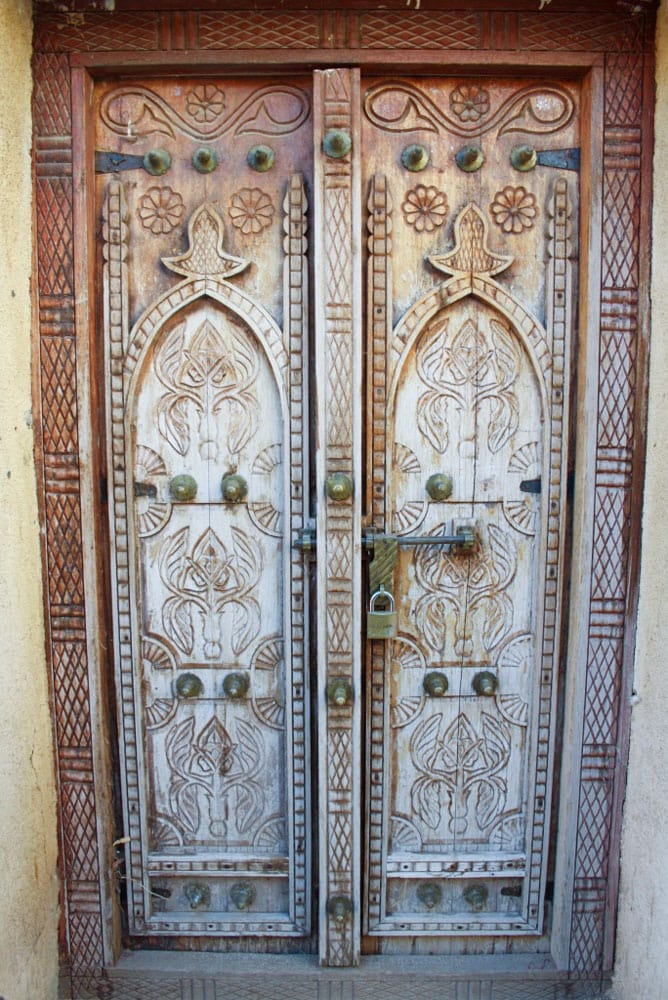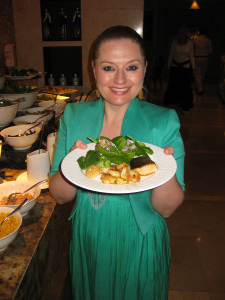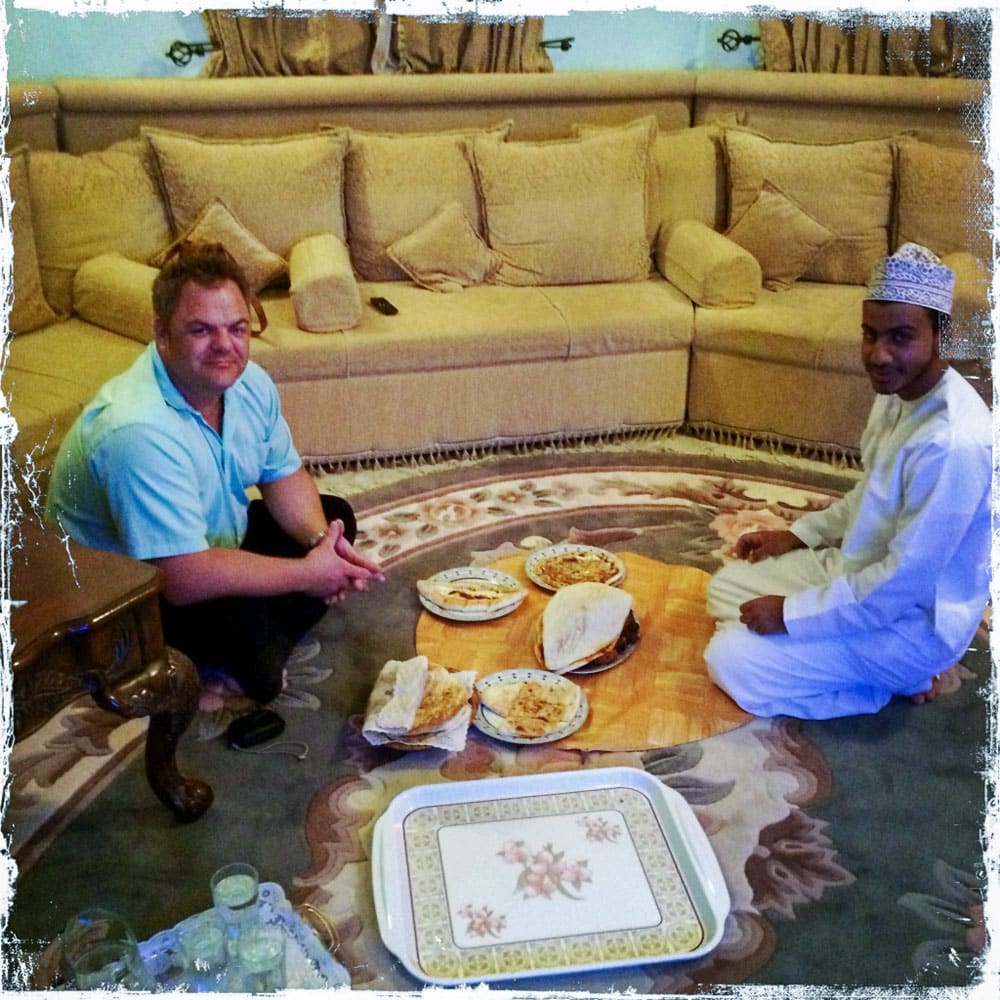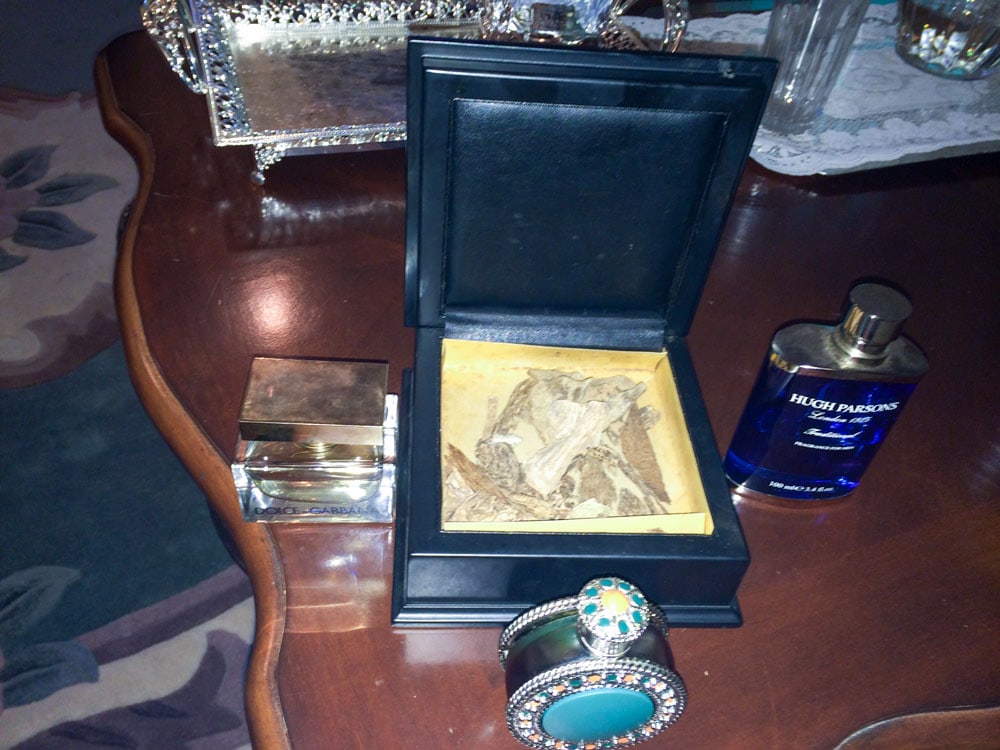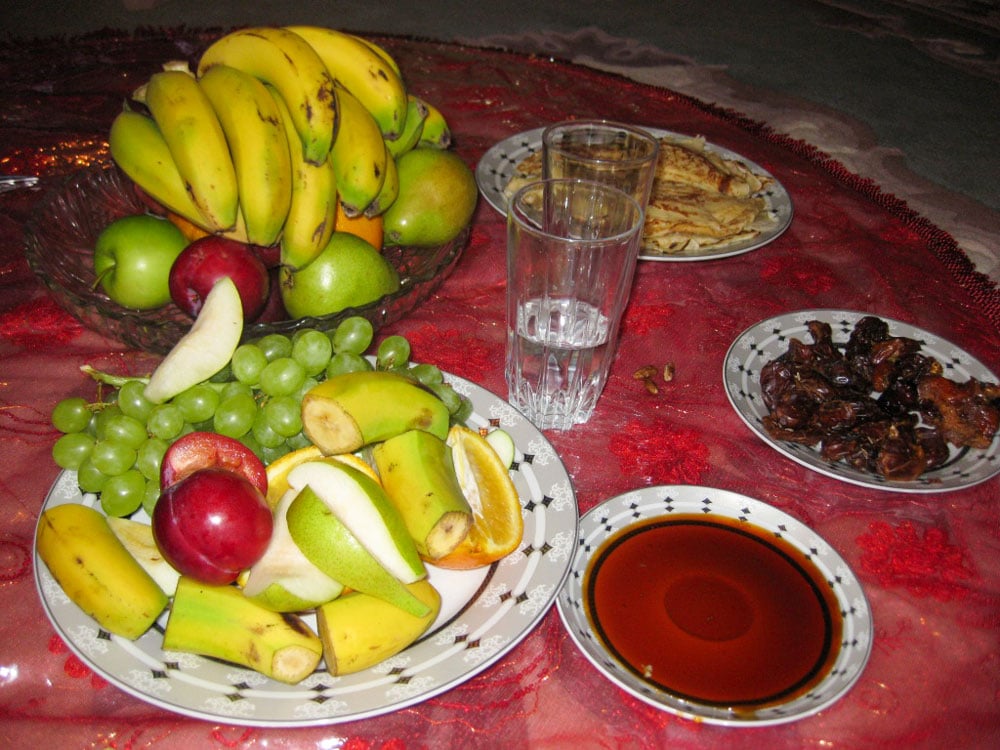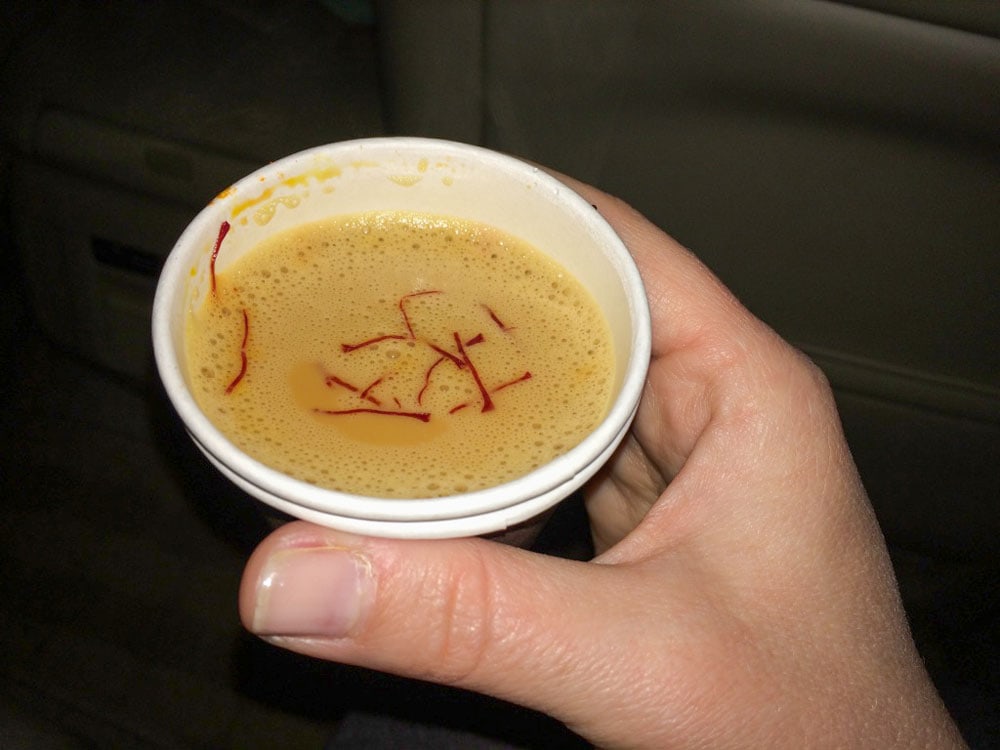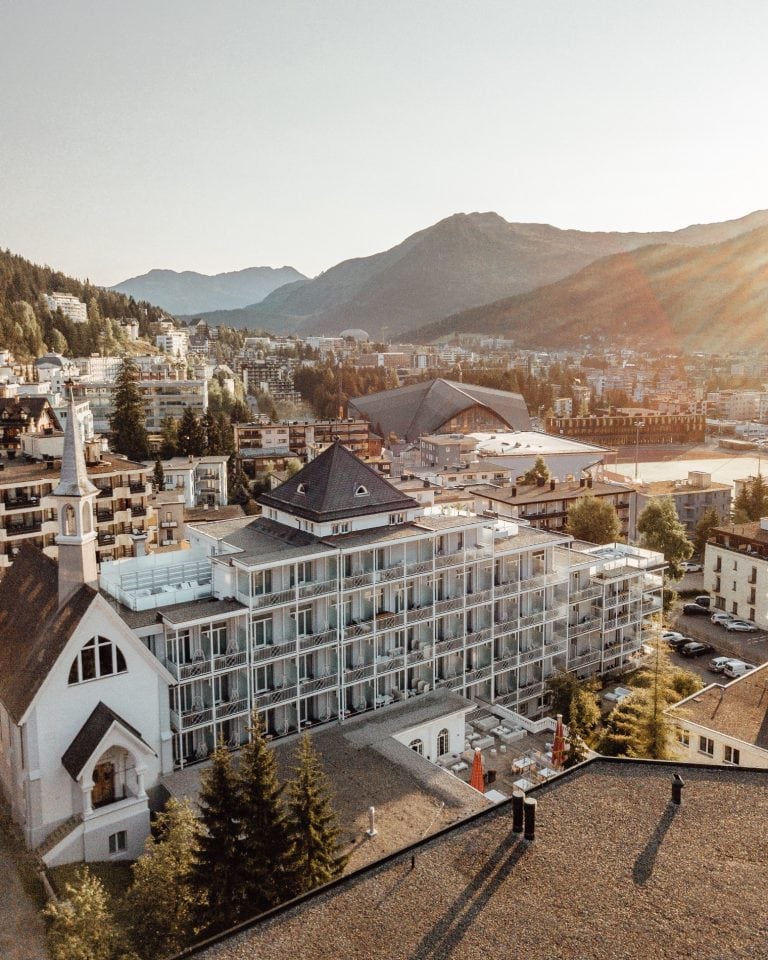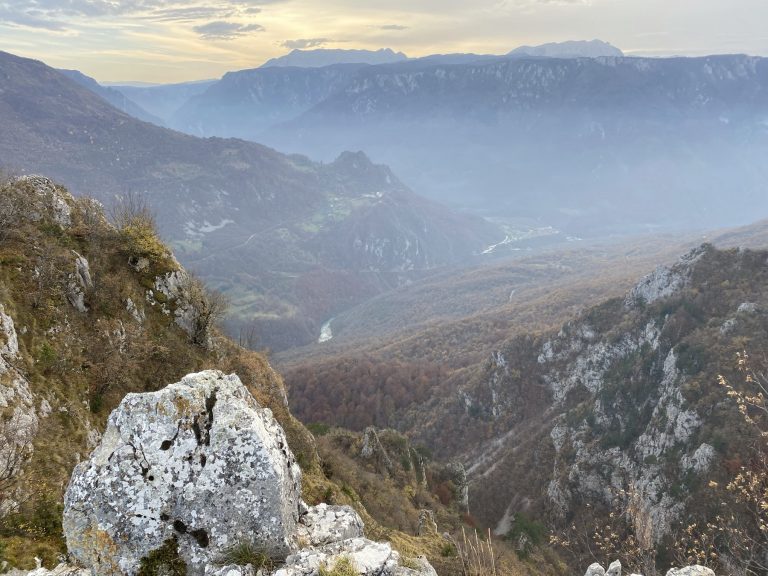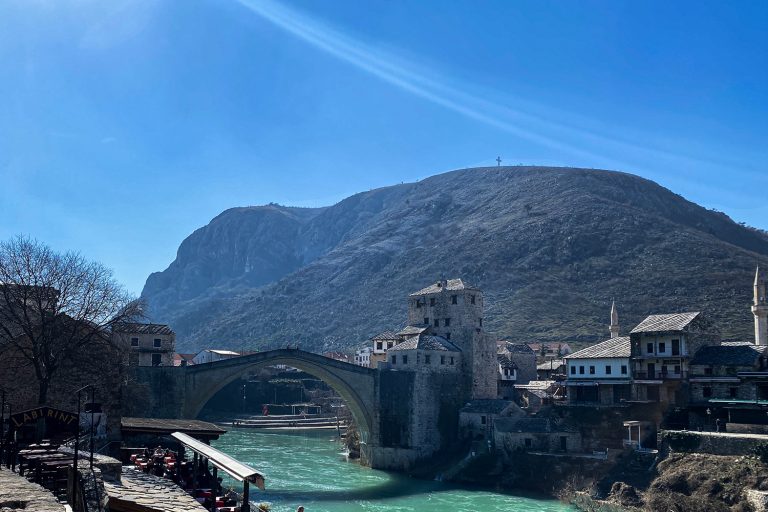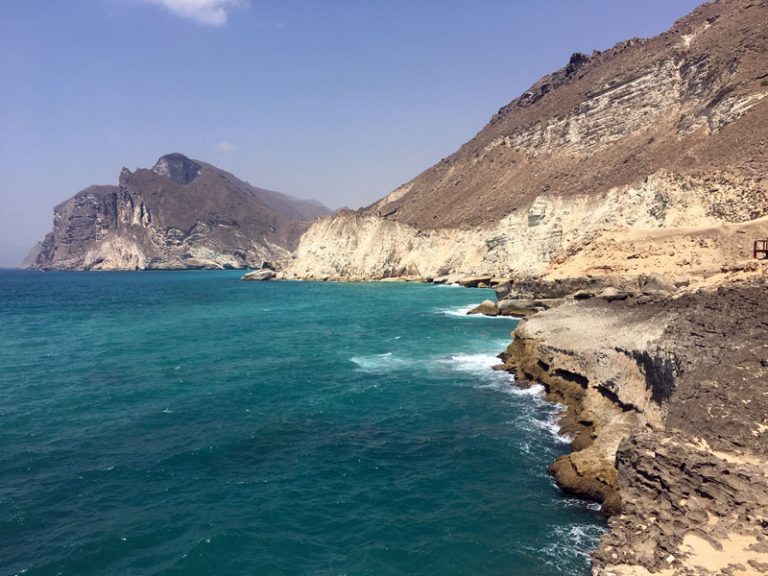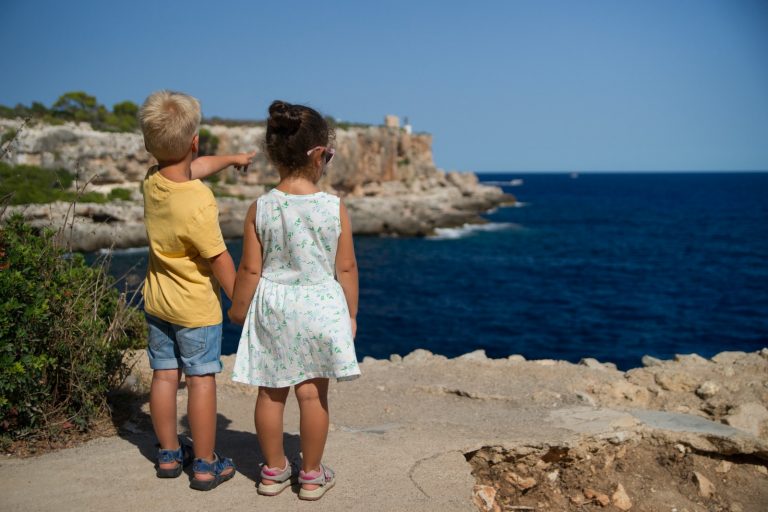Oman – fairy tale from 1001 nights
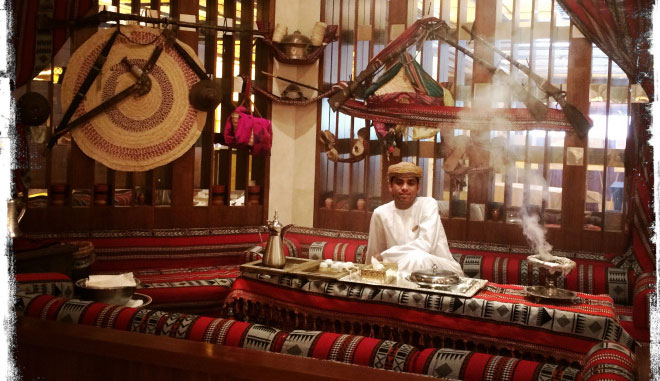
The account of my first trip to Oman. On this one I fell in love with this wonderful country with all its sights and great people.
A 5000-year history in harmony with modernity, barren highland formations, pristine beaches, green highlands and desert – Oman is a land of contrasts that transports visitors to a fairy tale from 1001 nights come true.
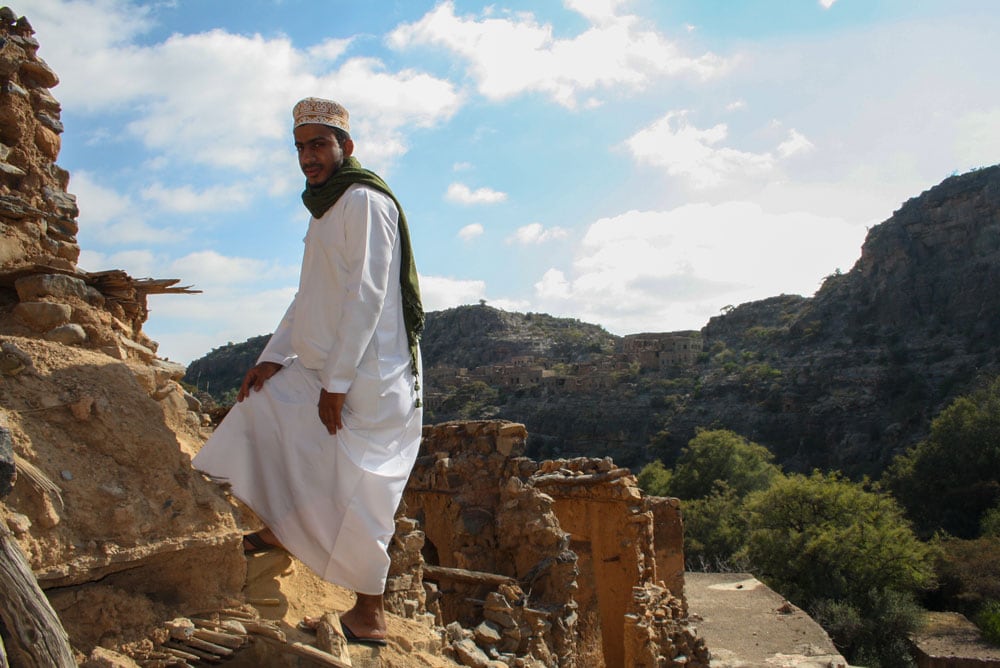
“Welcome to Oman!” With a smile and polite hospitality we are greeted at the airport of Mascat, the capital of the country. The pleasant scent of incense hangs in the air. “Sinbad was born here and the incense that the Magi brought to the Christ Child comes from here,” the driver tells us during the drive to the hotel.
We decided to spend a few days of our trip in Oman before flying to the Maldives. The country is located on the east coast of the Arabian Peninsula. Compared to other Arab tourist metropolises, Oman is very reserved and quiet. When Sultan Qaboos took over the government in 1970, he opened the country to the West while respecting the old traditions. The capital does not stand out with the tallest skyscrapers, but with bright low buildings in traditional architecture that harmonize with the landscape. There is no emphasis on material luxury. The visitor in Oman can come to rest again and forget the time.
Residing with the Sultan – the Al Bustan Palace
The saying “guest is king” applies to the Al Bustan Palace Ritz Carlton Hotel in the truest sense of the word. Here you are indeed visiting the Omani Sultan Qaboos, because the top floor of the super luxury hotel is reserved just for him. In 1985, he had the octagonal building built for the kings of the Arabian Peninsula who were attending the meeting of the GCC (Cooperation Council for the Arab States of the Gulf).
The hotel is located on the outskirts of Mascat surrounded by barren Hajar mountains and white sandy beach. In 2008 it reopened after extensive renovation. As soon as you enter the 40-meter-high reception hall, you are overwhelmed. The smell of incense and the splashing of the fountain, which together with the nine chandeliers custom-made in Austria cost over a million, welcome the guest. No expense was spared. It is not surprising that this six-star facility is one of the best in the world. Here, too, the splendor seems restrained, although the finest materials such as the best marble and precious woods were used. Four restaurants and an in-house bar cater to the well-being of guests.
Oman’s 5000-year history tells about the hometown of Sinbad, probably the most famous sailor, about adventurous ship voyages to India, about journeys along the spice and incense routes. Even if Sinbad is a fantasy figure from 1001 Nights, the place where the fairy tale is set would certainly be found in Oman. Oman is about the size of Germany with a population of almost 3 million. All destinations are very easy to reach by car, because the highway network is perfectly developed. We meet tourists who are traveling alone with a rental car. Oman is one of the safest countries in the world. And fuel is, as you would expect, very cheap: a liter of gasoline is about 24 cents.
We decide to use a guidebook. Abdullah is in his early twenties and a student. He studies tourism and works as a tour guide during the semester breaks. We quickly become familiar with him. Abdullah and I find some similarities in Omani and Bosnian culture. We talk a lot about both countries. Our first destination is the UNESCO cultural capital of Mascat. We are surprised: there is no hustle and bustle and you don’t encounter any pushing crowds.
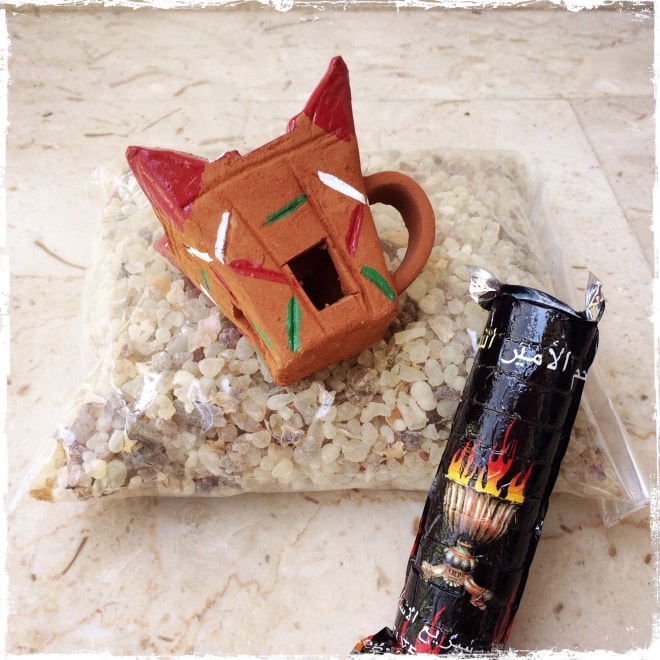
Omanis primarily wear their traditional clothing. Men are dressed in white shirt-like robes (“dishdasha”). From the collar hangs a small colored tassel, which is dipped in perfume. They cover their heads mainly with a richly embroidered cap or cashmere shawl. Women usually wear traditional black abbaya, which can also be embroidered with colored threads. They cover their hair with fine black headscarves. Omanis attach great importance to hygiene and fragrances. Your clothes are held over an incense burner after washing and ironing so that they take on the scent.
Also, one of the most precious perfumes in the world comes from Oman. Sultan Qaboos commissioned the famous perfumer Guy Robert to create a fragrance in the 1970s. Robert was given no limits, neither financially nor creatively. Thus, from his hand was born a fragrance essence of 120 rare and precious oils called “Amouage”. To this day, it is produced in Mascat. Even though the scent is very pleasant, it was unfortunately too intense and very dominant for us.

The Sultan Qaboos Grand Mosque
The Sultan Qaboos Grand Mosque was considered the largest in the world until a few weeks ago. A recently opened new mosque in Abu Dhabi has outranked it. The chandelier in the center of the prayer room was built by Swarovski and weighs eight tons. On the Persian prayer rug, 600 women spent four years tying 1.7 million knots.
The mosque can accommodate 20000 worshippers. Oman is a very tolerant country. The state religion is Islam; other religions are respected. We notice that no one asks about our faith, also unusual for the Orient. Abdullah explains to us that this is considered rude in Oman. No person may be judged according to his or her religion; tolerance is writ large.
Quiet action – Souk of Muttrah
The souk of Muttrah is very quiet. No touting, no trying to drag guests into the stores. Our guide takes us to the stores where he also buys for his family. He asks us to choose all the things we want to buy and leave the trading to him.
From previous trips to the Orient, we know how noisy and hectic the bazaars can be and how long the bargaining can take. The following also applies in an Omani bazaar: calm, restraint and respect are paramount. The fair price is agreed quietly and quickly. In our bags end up several cashmere cloths from Pakistan, an Abbaya, the popular oriental spice Za’atar and of course the best Omani incense including traditional incense burner. Frankincense was very desirable even in ancient times. He made the country rich.
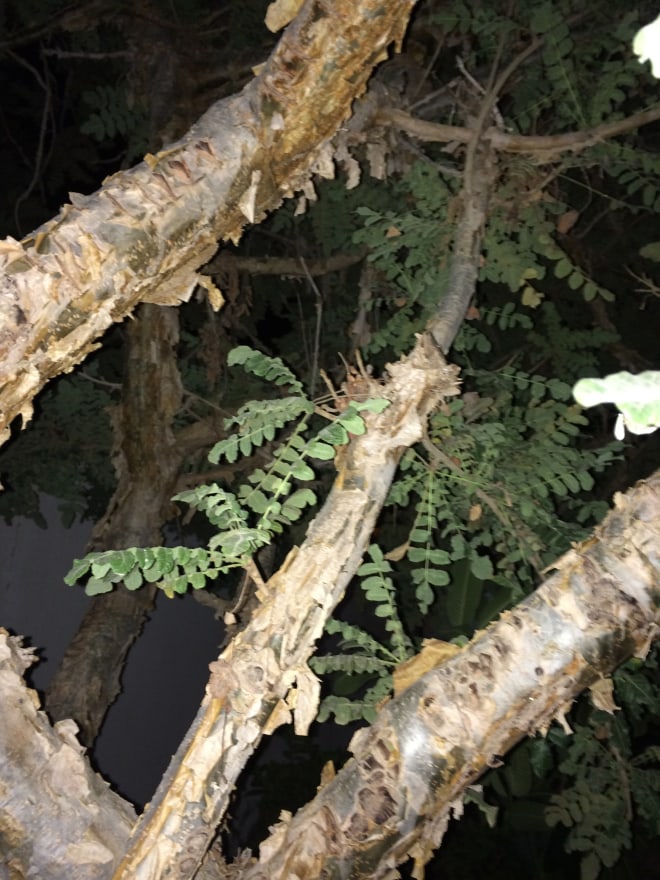
In the north, incense trees are found sporadically in private gardens. They grow in the south near Salaleh, close to the Yemeni border, about 1000 kilometers south of Mascat. Luban, as frankincense is called in Oman, still plays an important role today. Whether in private homes or public buildings, incense burners can be found everywhere. It is also said to have healing powers.
The vendors are happy to tell us about their homeland and customs. No matter who you talk to, as soon as it’s about their homeland and their sultan, their eyes light up. Omanis love their country and their sultan. Sultan Qaboos was sent by his father to England to study. When he returned home, he noticed how badly his people were doing under his father. There was a seven-kilometer paved road, hardly any hospitals or schools, and illiterate people made up 98% of the population. In 1970 he overthrew his father. Within a few years he built up the country. Equality prevails between men and women and is enshrined in law. Veiling is also not compulsory for women. They are very self-confident and highly educated.
Our next destination is Wadi as-Shab, a dry riverbed. There are several of them in Oman, this one is among the most beautiful. We drive south along the east coast. Everywhere you could just stop to take a break on the beach. The highway is new and surrounded by high barren mountain landscapes and vast pristine beaches. “A few decades ago, the only way to travel here was by camel or donkey,” Abdullah tells us. We notice that we had not seen a single camel all these days. Today, primarily Asian SUV’s drive with four-wheel drive, since on some mountain passages only four-wheel drive is allowed.
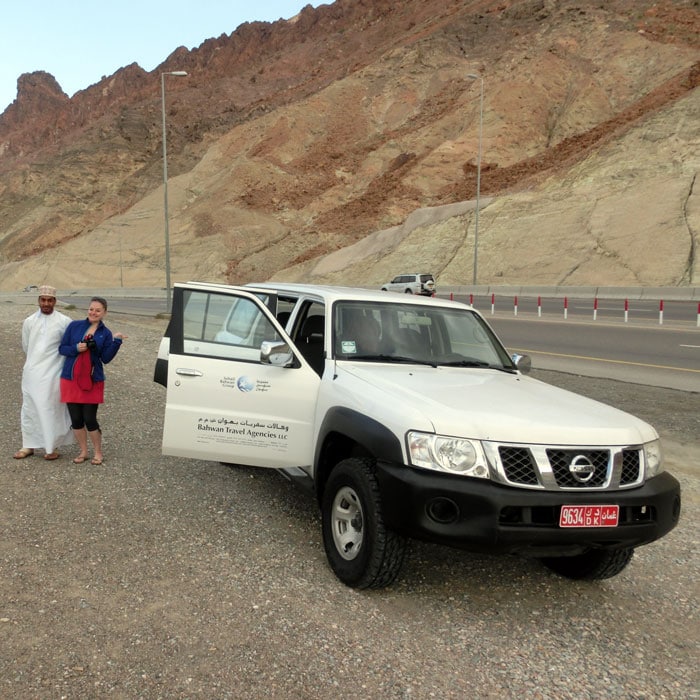
Hawiyat Najm – the place where the star fell
Before that we make a stop in the middle of the desert at Hawiyat Najm Park. Our guide Abdullah, who has become a good friend within three days, wants to show us a wonder of nature. We walk a bit through a barren plain. Many locals and an Indian tourist group walk in front of us. When we arrive, we are speechless. In the middle of this desert landscape is a sinkhole with turquoise green water.
The water is so clear that you can see the bottom from the height! The Bimmah depression was formed due to a meteorite impact, the inhabitants tell each other. It is not known when this was. The water, a mixture of salt and fresh water, is fresh and very clean. Those who wish can take a bath in it. Omanis do it too.
Quriyat
Then we will continue to the 16th century fortress in the small port city of Quriyat. We visit the interior and enjoy a wonderful view over the city from the roof.
Wadi as-Shab – like in a fairy tale from 1001 nights
Now we go to the wadi. During the ride I watch the lonely dream stands we pass. Upon arrival, we pack provisions and bathing suits in our backpacks. It goes about an hour over large rocks and nature trails through a gorge between two mountains. One really feels like in the fairy tale of Aladdin or Alibaba and the 40 robbers. There are hardly any people on the road and you are overwhelmed by the nature images, you don’t want to miss any detail. Even the natural paths, some of which are not without danger, do not keep you from going further. The curiosity about what else might be hidden behind the rock is too great. Sometimes there are small waterfalls, sometimes banana gardens, which are supplied with water according to the millennium-old irrigation system. Finally we reach the destination, the Wadi as-Shab.
We stand in front of a natural pool of green water and gratefully take a bath in it. As the sun sets, we walk back. We meet a group of young Omanis having a barbecue. Abdullah tells us that wadis are very popular with the population. Every Omani loves the nature of his homeland and spends his time outside as often as possible. Also, you will not find litter in the open, education for the love of nature takes place in childhood.
Artist City Nizwa
No other Arab country has as many forts and castles as Oman. That of Nizwa in the interior is one of the most famous. Today the city is considered a city of artists, in the Middle Ages it was the headquarters of the Imams.
Go directly to my detailed travel information about Nizwa.
The castle is surrounded by bazaars and artists’ studios. The bazaar with live animals is famous throughout the country. The castle is completely renovated. The view over the city is phenomenal: white house roofs jutting out between the palm trees, rock formations in the background that seem to go on endlessly into the horizon.
Gebel Akhdar – The Green Mountain
From there we drive 2090 meters to the height of Gebel Akhdar, the Green Mountain. The road is perfectly developed, yet only SUV’s with four-wheel drive are allowed for safety reasons. Already Lady Diana visited here and because she was so enthusiastic about the view, this part has been christened “Diana-Point”.
I can understand them: endless expanses of canyons as far as the eye can see. We visit a 500 year old village and stand at the foot of a rock formation of the Sayq Plateau. Below and around us are terraced gardens with almond, rose, apricot and pomegranate trees. Since it rains here more often, the harvest is very productive. The roses and pomegranates from this part of Oman are considered the best in the country.
Abdullah tells us that Gebel Akhdar is especially beautiful in spring, when the scent of roses mingles with those of almond trees. In summer, when it gets very hot in the valley, Omanis like to vacation at these heights.
Finally, Abdullah and I climb to a centuries-old abandoned village and take a leisurely look at the architecture of the houses from the inside. There is no one there but us. We enjoy the peace and are moved. There are no prohibition or danger signs anywhere. Indeed, the country has a liberating effect on the soul.
On the way home we stop at a snack bar. We eat sandwiches and salad. It tastes fantastic and the prices are very reasonable.
Dinner in style at the hotel
In the evening we invite Abdullah to dinner at the hotel. Matthias puts on the Omani clothes he bought at the souk a few days ago. Abdullah and the staff from the hotel are delighted.
In the evening there will be an Omani buffet. We taste everything and Abdullah explains us the preparation. Omani cuisine is very diverse. I am addicted to appetizers like houmus (chickpea puree), tahina (sesame paste), moutabel (grilled eggplant in sesame-garlic-yogurt sauce), baba ganoush (eggplant puree), labneh (cucumber-yogurt salad), Zeitun (tomato-olive-onion salad), Tabuleh (salad of finely chopped parsley, finely diced tomatoes and onions with lemon juice and mint) and Achar (sour pickled vegetables). And that’s just a small excerpt.
For the main course there are wonderful lamb dishes like Kabsa (lamb stuffed with rice and almonds) or Ghuzi (grilled lamb on rice with nuts), Shawarma (kind of kebab with lamb or chicken), Kubali (breaded minced meat balls). Vegetarians will also find Omani delicacies such as foul medames (thick bean stew), sabaneq (spinach with coriander), sambusas (stuffed dumplings). Besides traditional oriental sweets like baklava and halva, wonderful desserts sweeten the palate and soul like Umm Ali (pudding made of bread and milk with cinnamon and raisins), Mehabiya (pudding with rose water, honey and pistachios), Basbousa (cake made of semolina and almonds).
Recommended for in-between: various dates pure or filled with various nuts and fruits.
Thank you, Abdullah! – Eating with locals
On the last day before our departure we meet with Abdullah. He picks us up from the hotel and takes us to the store where Omani women buy their abbayas. There they are a lot cheaper than in the malls and the selection is large. I quickly become resourceful. “And now take your time,” Abdullah smiles, “now I’ll show you how we Omanis spend our evenings.” We drive to an Omani teahouse. The waiter brings the order directly to the car: black tea with milk, rose water and saffron threads.
As a surprise, Abdullah invites us to dinner at his family’s home. “My father said to invite people who are so kind to me. I’m happy to do that.” We were touched.
It was served on the floor according to Omani tradition. As an appetizer was fruit, rose water. Pancakes and soft dates served. The main course was platters of grilled meats and vegetables. Eating is done with the right hand. After the meal, precious woods from India were ignited on coals and held under our clothes. This is to disappear from the guests the smells of the meal. We got to know some of Abdullah’s brothers. It was a wonderful and eventful evening.
A dream vacation comes to an end
The next day we were very sad to leave, even though our next destination was the Maldives. The spirit of Oman was with us and has remained so to this day. Oman is just the right destination for travelers in search of tranquility and self-discovery. And after adventures in untouched nature. The country is a magical place that wants to be discovered with tranquility and patience. The magic of Oman has infected Matthias and me.

The Omanis have shown us how love and respect for fellow human beings makes for a peaceful life and that peace among all religions is very possible. May Sultan Qaboos remain with his people and this wonderful country for many years to come. We thank Abdullah and his family who gave us the spirit of Oman, as well as the dear Omanis who told us unforgettable stories about their homeland with their shining eyes. Our next trip to Oman is already being planned for this year – there is still so much to discover. And we already miss our friend Abdullah very much. (Note: I already wrote this travelogue after my first trip to Oman).
More about Oman at:
https://www.facebook.com/OmanTourismus


